






















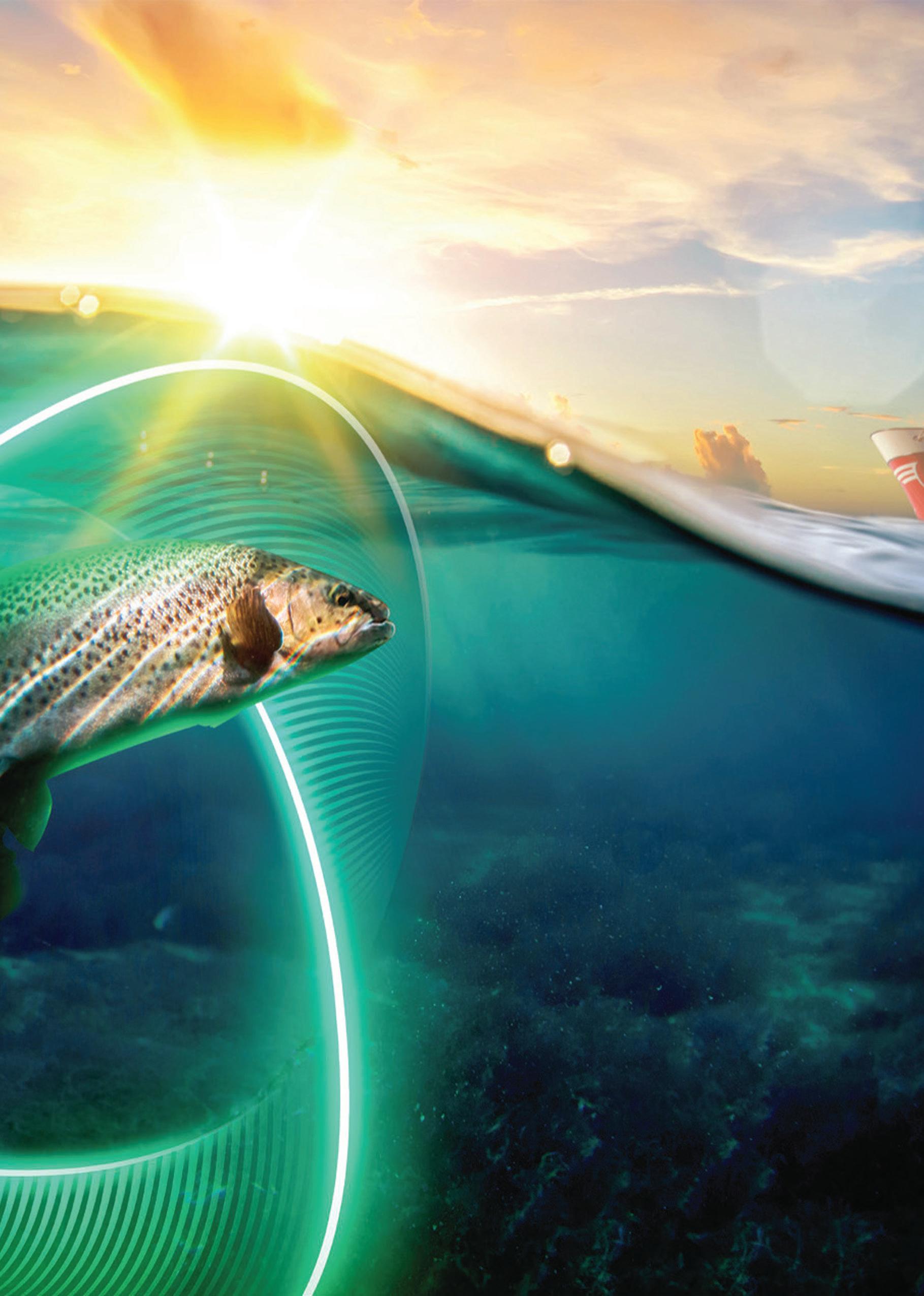


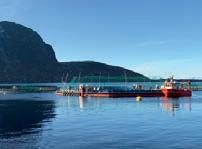



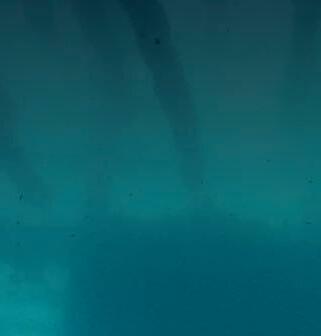
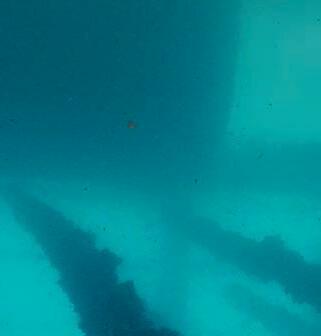





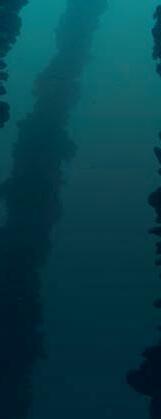




Bring confidence to your net cleaning job, with the most reliable pump on the market.


NLB’s high-pressure water jet pumps are proven reliable for offshore and onshore net cleaning. Engineered specifically for the aquaculture market, they withstand the harsh conditions of open seas, foul weather, and salt corrosion, all while delivering the same performance and durability NLB has been recognized for since 1971. Our units also offer a compatible interface with the industry’s leading head cleaning systems.

NLB will go the extra mile to make the switch easy for you. Contact us today to discuss your options!


AT least 10% of the waters around Scotland could be designated as Highly Protected Marine Areas – closed to fishing, aquaculture or offshore energy infrastructure –under proposals from the Scottish government.
The consultation on Highly Protected Marine Areas (HPMAs) sets out a policy framework, selection criteria for potential HPMAs and a process for balancing environmental considerations against economic needs and the interests of island and coastal communities.
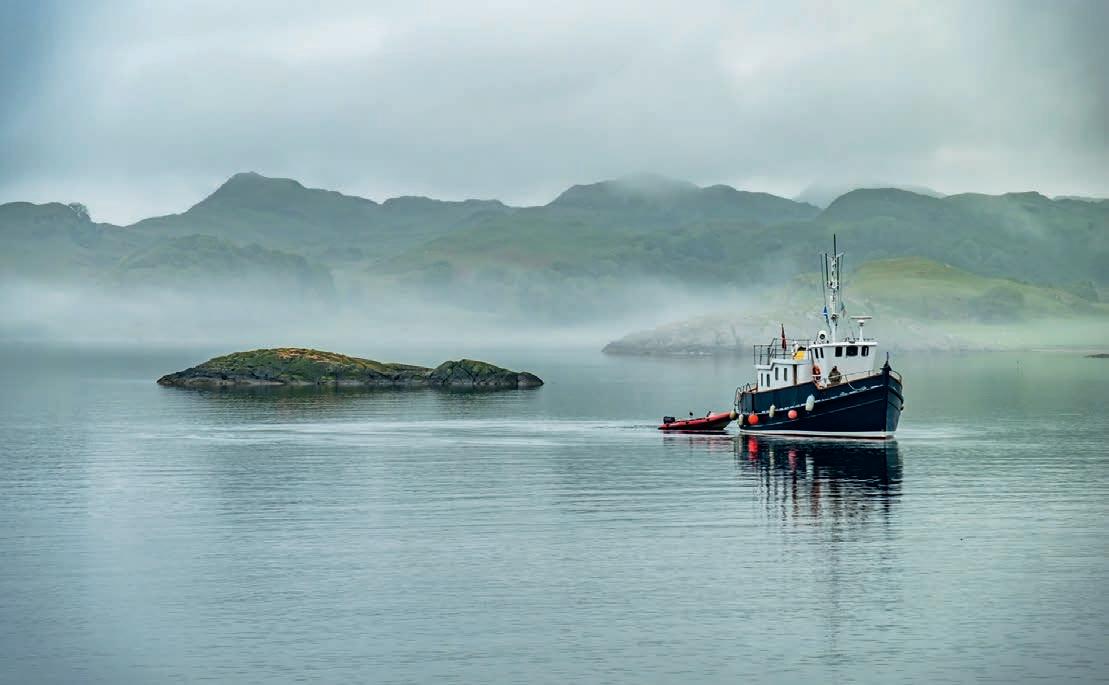
The consultation defines HPMAs as “… designated areas of the sea that are strictly protected from damaging levels of human activities, allowing marine ecosystems to recover and thrive. These areas safeguard all of their marine life for the benefit of the planet and current and future generations; providing opportunities for carefully managed enjoyment and appreciation.”
Within designated HPMAs, all forms of fishing – whether commercial or recreational – would not be allowed, and these zones would also be off limits to aquaculture and any new infrastructure such as offshore wind turbines, ports and harbours.
Consultation on the proposals, which can be viewed online, will take place up to 20 March 2023. The consultation does not set out where any HPMAs are likely to be sited.
The restrictions in HPMAs go further than the existing framework of Marine Protected Areas (MPAs), which already cover just over one-third of the seas around Scotland.
For Scottish inshore waters (up to 12 nautical miles from the coast), there is full legislative competence within Scotland to introduce the necessary powers to designate HPMAs through primary legislation. For the Scottish offshore region (beyond 12 nautical miles out to the outer limits of the UK continental shelf), powers over the marine environment are currently reserved to the UK government,
with a small number of exceptions.
The Scottish government has said, however, that it would ask for powers to designate HPMA equivalents in offshore waters around Scotland.
Introducing the consultation, Scotland’s Environment Minister, Mairi McAllan, said: "Scotland has some of the most beautiful and diverse marine ecosystems on the planet, and we are committed to safeguarding them.
“As we develop this landmark HPMA network consultation, I would urge everyone with an interest in our precious marine environment, blue economy and coastal communities to take part.”
She also announced her intention to permanently designate the Red Rocks and Longay area – in the Inner Sound of Skye – as an MPA,to safeguard the future of the critically endangered flapper skate (Dipturus intermedius).
The pledge to introduce HPMAs was part of the Bute House Agreement between the Scottish National Party and the Scottish Green Party, which brought to Greens into coalition with the SNP.
The Scottish Green spokesperson for coastal communities, Ariane Burgess, said: “These bold plans represent a seismic shift for Scotland’s marine biodiversity. They will see key parts of our seas and coasts dedicated to the protection and restoration of nature, protecting them from exploitation and destruction.

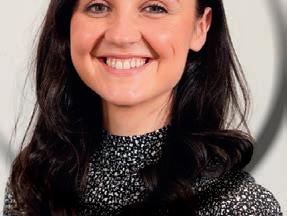
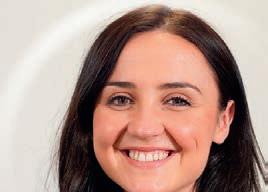
"Highly Protected Marine Areas will be special places, protected for the good of current and future generations for their local, national and global importance. They will also play a critical role underpinning the restoration of healthy
This page from top: HMPAs have not been welcomed by the fishing industry; Mairi McAllan Opposite: Life on the seabed
fish populations and supporting the development of a sustainable fisheries sector.”


The Chief Executive of government agency NatureScot, Francesca Osowska, said: “We are a nation of coasts and seas, and it is vital that we safeguard these special places. The new HPMAs, which will complement and strengthen the existing MPAs network, will help to tackle both the climate change and nature emergencies, and meet our goal to achieve net zero in Scotland by 2045.”
She added: “Healthy seas also sustain the livelihoods of thousands of people in Scotland – without this resource, our food, energy and tourism industries would suffer.
“We know these proposals will be of interest to many people throughout Scotland, and we look forward to hearing a wide range of views on how we can best safeguard our marine life and habitats and the complex marine ecosystems they are part of, while at the same time securing a sustainable future for all those who use our seas.”
The announcement was not welcomed, however, by the Scottish Fishermen’s Federation, whose Chief Executive, Elspeth Macdonald, said: “HPMAs are an exercise in government greenwashing. There is no justifiable scientific rationale for their introduction or any evidence whatsoever that they will achieve their very vague aims.
“They will inevitably have a significant impact in further squeezing fishing vessels out of large areas of sea – 37% of Scottish waters are already protected under the existing MPA network.
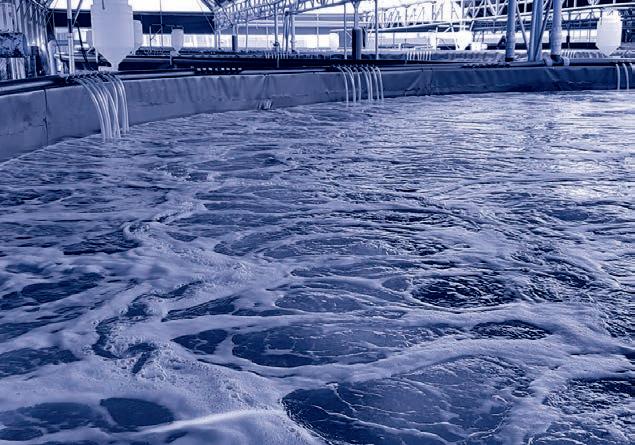
“MPAs aim to strike a balance between conservation and sustainable harvesting, whereas HPMAs will exclude fishing altogether. HPMAs will also exclude most other types of activity, resulting in even greater pressure for marine space in other areas.”
She said the proposals were being brought in too fast for meaningful consultation, and added: “The speed at which the Scottish government intends to bring in these restrictions – first signalled out of the blue, without any consultation, in the Bute House Agreement – is totally unsuitable relative to the scale of the potential impact on fishing.
“The fishing industry has no objection to meaningful conservation, and indeed has been an active and supportive partner in developing the MPA network, but it is vitally important that we understand what we are conserving and why, and how we assess the contribution of restrictions to the objectives in question.
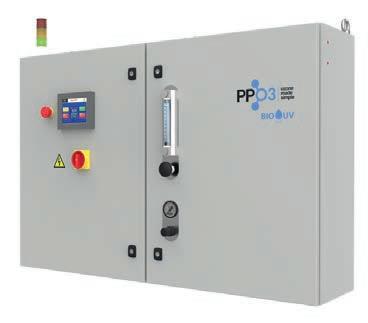

“The HPMA process is prioritising political objectives over good policymaking and decision-taking.”
MOWI Scotland’s appeal for permission to expand its salmon farm at Loch Hourn on Scotland’s
Last June, the Highland Council’s Northern Planning Committee, in Dingwall, voted by a narrow margin against the application to increase biomass at the site. Mowi was seeking a 10% increase to 2,750 tonnes.
The Reporter, Christopher Warren – the Scottish government’s legal official considering the planning appeal – issued a decision on 20 December, in which he dismissed objections to the Mowi application.
A campaign group, the Friends of Loch Hourn, had argued that fish farming in the loch is harming wild salmon.
Considering the appeal, Warren went through the objections in detail and noted that the Environmental Impact Assessment (EIA) had not found that the expansion of the site entailed an unacceptable risk of impact for the environment.
He stated: “I find no basis to conclude that finfish farming is inherently unsustainable… I conclude that this proposal does therefore represent a sustainable form of development.”
BAKKAFROST’S Scotland operation produced an unchanged harvest of 5,100 tonnes during the final quarter of 2022, the latest trading update from the company, out today, shows.
During last year, Bakkafrost secured land to build a large new hatchery in Scotland, in addition to its site at Applecross, which is being upgraded. CEO Regin Jacobsen said during the summer that building hatchery capacity in Scotland,was a top priority.
Bakkafrost’s latest update says ongoing expansion at Applecross is proceeding well and is scheduled to reach an important milestone during the final quarter.
Output from the company’s main Faroe Islands production operation fell by 1,400 tonnes to 19,300 tonnes during the October to December period.This was made up of 14,000 tonnes from Faroes Farming West, 5,300 tonnes from Farming North and no
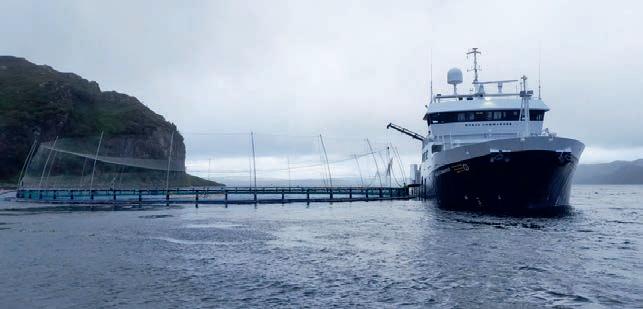
production from Farming South, which produced 2,500 tonnes during Q4 last year.
Bakkafrost said the total harvest for 2022 in the Faroe Islands would be 66,700 tonnes. In Scotland, the total harvest in 2022 hit 23,900 tonnes.The total harvest from the entire group in 2022 was 90,600 tonnes, against 96,900 tonnes for 2021. All harvest volumes are provided as head-on gutted (HOG) equivalents.
Feed sales for Q4 2022 were 32,600 tonnes.The total for feed sales in 2022 was 127,800 tonnes and 297,800 tonnes of raw material were sourced.
A fund to support wild fish conservation projects in Scotland has been expanded, with angling organisations now among those being invited to apply for grants.
The Wild Salmonid Support Fund, set up by the salmon industry in 2021, has been renamed the Salmon Scotland Wild Fisheries Fund. With financial support from the industry, the fund aims to invest £145,000 through next year in habitat protection, removing barriers to migration, providing protection from predators and restocking.
Applications will be invited from fisheries organisations, including local angling clubs, fishery boards and other community associations.
Previously run by grant-making body Foundation Scotland, the Wild Fisheries Fund will be coordinated by Fishery Manager Jon Gibb, based in Fort William, in the north-west of the Highlands, who has championed a constructive relationship between the farm-raised salmon sector and fisheries and angling groups.
Gibb, an experienced fishery manager, said: “Wild salmon are under very serious threat from a

wide range of impacts both in the river and at sea, and any projects to further understand those impacts and mitigate against them are urgently required.
“Both the farmed and wild salmon sectors have a common interest to thrive in our shared space, and both rely on the rich heritage of the wild salmon and the angling that depends upon them.”
Salmon Scotland Chief Executive Tavish Scott said salmon farmers had a desire to save “one of Scotland’s most iconic species”.
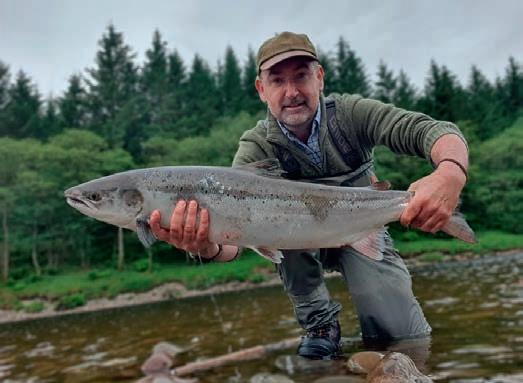
The Wild Fisheries Fund is part of a total five-year investment of £1.5m from salmon farmers.
To date, grants have been used to save and restore a historic dam in the Western Isles that assists wild salmon to progress to their spawning grounds, as well as restoration projects to reduce riverbank erosion, and measures to provide tree canopy and in-stream cover for young salmon.
The revamped fund will prioritise applications of a practical nature that aim to protect and enhance wild salmon populations and local angling opportunities, recognising that salmon and trout fishing is at the cultural heart of many Highland communities and provides human health benefits.
The fund will be open for applications on 1 February and the closing date will be 31 March, with decisions on grants taken by Salmon Scotland in April.
SALMON producer Scottish Sea Farms has installed four 160m pens, its biggest to date, at Fishnish off the Isle of Mull, in a move aimed at improving fish health and welfare, employee safety and operational efficiency.

Where previously Fishnish had 10 100m pens, there are now just four 160m pens capable of supporting the same biomass and delivering several key benefits in the process, said Farm Manager Alastair Fraser. “The new £1.3m setup promises more room for the fish, better water flow and better oxygen, all of which will help the salmon thrive. Dealing with four pens instead of 10 also gives us more time as a farm team to focus on fish health and biological control. We can carry out any treatments faster, as it’s often the number of pens that takes time, as opposed to the number of fish.”
The advances in terms of employee health and safety look set to be every bit
as significant, the company believes.
Area Manager for Mull Andrew MacLeannan said: “Fishnish is one of the highest energy sites on the mainland in terms of weather and current speed, so when we were looking to upgrade the farm infrastructure, it made sense to go for the larger pens because they’re renowned for less movement in the weather.
“The bigger the pen, the heavier the mooring and the easier it’s going to be to make it safe, both for the team and the fish.
“All the lifting will be done by winches, with 10 fitted to each walkway that can be remotely controlled from a boat. Fishnish is first to switch to 160m pens “It’s an optional extra, but further adds to the safety of the staff and fish, as it gives us more control over the netting systems.”
To familiarise themselves with the new 160m pens – supplied by ScaleAQ
complete with moorings and HDPE
Midguard knotted nets designed to deter seals – MacLeannan and Fraser made two separate trips to Norway to observe operations at Lerøy and SalMar, which both use the larger pens.
“The farm team were a wee bit apprehensive at first, but excited too,” said Fraser. “It’s been a new challenge for us all, and a big learning curve, but with Scale AQ’s help, it’s actually been quite straightforward.”
Above:
SALES of salmon in UK stores are running at £1.2bn a year. The high-protein fish increased its share of the market ahead of the busy Christmas period, Salmon Scotland has revealed.

In the 12 months to October, new figures show that salmon made up 29.6% of total fish sales – an annual increase from 28.9%, despite lower volumes and overall food inflation.
In the year to October 8, 2022, £4.1 billion worth of fish was bought at UK retailers, down marginally by 4.2 per cent and back to similar values in 2020. Overall, fish purchases by volume were down 5.3% to below 400,000 for the period.
Salmon Scotland said: “International sales of Scottish salmon also remain strong, according to the latest data collated by Salmon Scotland, with more than £500m in fresh and smoked exports in the first nine months of 2022 [and] the most recent three months higher than pre-pandemic levels for fresh exports at £165m, and only down around 9% on the record-breaking 2021 figures.”
Despite the red tape from Brexit, European demand has seen the proportion of exports to the EU accounting for 76% of UK salmon exports in the most recent quarter.
Scottish salmon remains the UK’s biggest food export, followed by bread and pastries, chocolate, cereals, and cheese.
With reports of turkey shortages and the deepening costof-living crisis, Scottish salmon was expected to be in high demand over the Christmas season.
These latest figures, from trade body Salmon Scotland, using data from HMRC and NielsenIQ, came at the end of a highly successful year for the sector, which saw the Scottish government recognise the immense contribution of farmraised salmon to the blue economy.
Other highlights include Salmon Scotland being welcomed into the world’s leading body for chefs, and a university analysis that found that Scottish salmon is even more
nutritious than thought – providing more than 70% of daily vitamin D needs in a single portion.
Tavish Scott, Chief Executive of Salmon Scotland, said: “With food price rises, soaring energy bills and rampant inflation, the fact that salmon has increased its share of the UK market demonstrates the popularity of our fish."
He added: “A high level of domestic seafood consumption is not only healthy for the population, but it will also help the economy in some of the most rural areas of Scotland combat the challenges being faced by many at this time.


“Our sector is not without its own challenges,and we can’t hope to repeat the record-breaking performance of 2021, but international demand remains high – particularly in France, where Scottish salmon is recognised by chefs, restaurants and consumers as the best in the world.”

POLAND and D enmark, which both have large salmon processing sectors, continued to be the largest markets for N orwegian salmon last year, according to the annual figures published by the Norwegian Seafood Council.
But seafood sales to the UK, which traditionally buys a great deal of N orwegian cod and haddock, increased by 27% to NOK 7.8bn (£650m) in 2022.
Sales of Norwegian seafood to the US showed the most dramatic rise, at 46%, with much of it salmon, while sales to China rose by 45% despite some large cities facing Covid lockdowns.
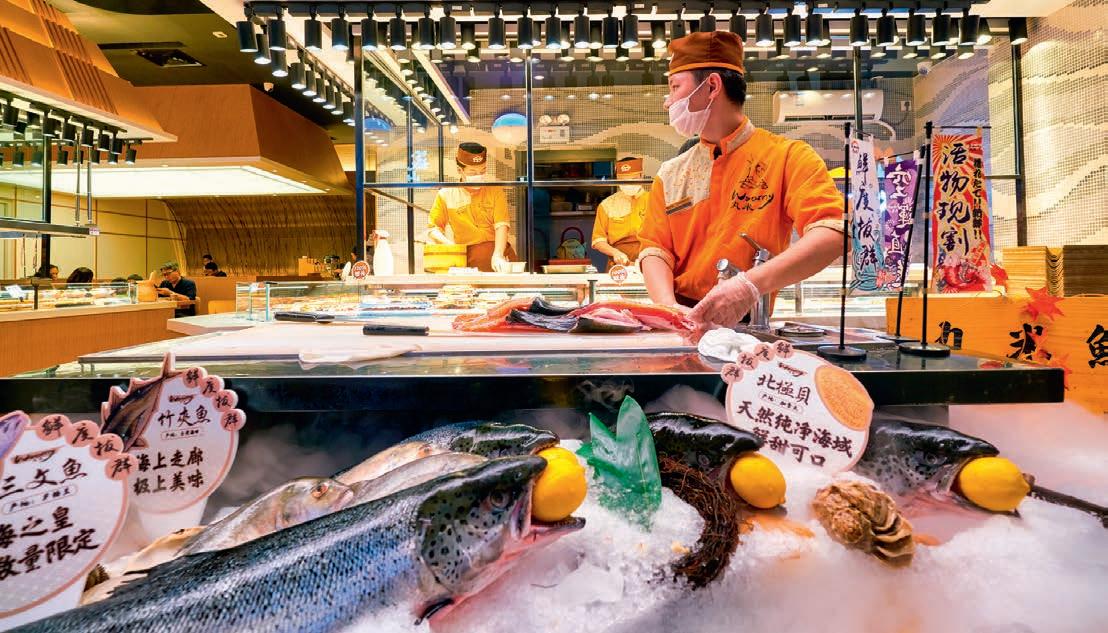
Figures released yesterday by the Seafood Council showed that N orwegian seafood exports reached NO K 151.4bn (£12.6bn), a record value, in 2022.
Seafood Council analyst Eivind Hestvik Brækkan said: “We have also seen significant growth in the export value to Great Britain, driven by increased exports of frozen whole cod. We have to go all the way back to the year 2000 to find a higher export value of frozen cod to Great Britain.
The main 2022 export markets published by the Norwegian Seafood Council is (increases are on 2021 figures): 1. Poland: NOK 15.5bn (+24%) 2. Denmark: NOK 12.6bn (+22%)
US: NOK 11.7bn (+46%)
France: NOK 10.6bn (+29%)
The Netherlands: NOK 9.4bn (+34%)
Great Britain: NOK 7.8bn (+27%)
China: NOK 7.3bn (+45%)
Italy: NOK 6.6bn (+30%)
Portugal: NOK 4.9bn (+38%)
The main species exported in 2022 were:
1. Salmon: NOK 105.8bn (+30%)
2. Cod: NOK 12.2bn (+25%) 3. Mackerel: NOK 6.3bn (+7%) 4. Trout: NOK 5bn (+24%) 5. Herring: NOK 3.9bn (-9%)
6. Sei: NOK 3.6bn (+44%)
Last year, aquaculture accounted for 73% of Norway’s total seafood exports by value, while in volume it made up 45%.
In 2022, Norway exported 1.3m tonnes of seafood from aquaculture.The value was NOK 111.3bn, around 30%, up compared with 2021, while the volume fell by 2.5%.
The value of farmed salmon exports increased by NOK 24.6bn (£2bn), and the volume fell by 2%.
Seafood analyst Paul T. Aandahl said exports to the US saw the largest increase in value last year, with an increase in export value of NOK 3.2bn, or 57% compared with the previous year. The export volume to the US ended at around 66,000 tonnes, which is 22% higher than the previous year, he added.
The year also saw a record high price for fresh salmon fillets at NOK 117, or £9.75p per kilo.
There was also a record high price for fresh whole salmon at NOK 79 or £6.50 per kilo.
Aandahl said it was the price increase that contributed to most of the value increase for salmon last year: “The reopening of society after the coronavirus pandemic has had a positive effect on the demand for salmon.
“An increase in demand in combination with a slight decrease in produced volume, both globally and in Norway, is the most important reason for the price increase – in addition to increased further processing and a weakened Norwegian krone,” he maintained.
Last year, fishing accounted for 27% of Norway’s total seafood exports by value, while in volume it made up 55%.
U.S. Soy farmers are committed to advancing the United Nations Sustainable Development Goals. We are leading the way by producing more while using fewer resources, implementing farming practices that reduce carbon footprint, and helping to preserve forestland. Since 1980, U.S. Soy farmers have:


• Increased soy production, using roughly the same amount of land by 130%
• Improved water use efficiency per bushel by 60%





• Improved land use efficiency per bushel by 48%
• Improved energy use efficiency per bushel by 46%
• Improved GHG emissions efficiency per bushel by 43%
• Improved soil conservation per acre by 34%


From 1982–2017, the U.S. increased forest land by 2.1 million hectares and reduced crop land by 21.4 million hectares. But we won’t stop there. U.S. Soy farmers’ ongoing commitment to sustainability enables you to produce food, feed, energy and other products to support a healthy society, even as we preserve the planet for future generations.
See how we’re going further for you, your customers and the planet at USSOY.org/solutions.
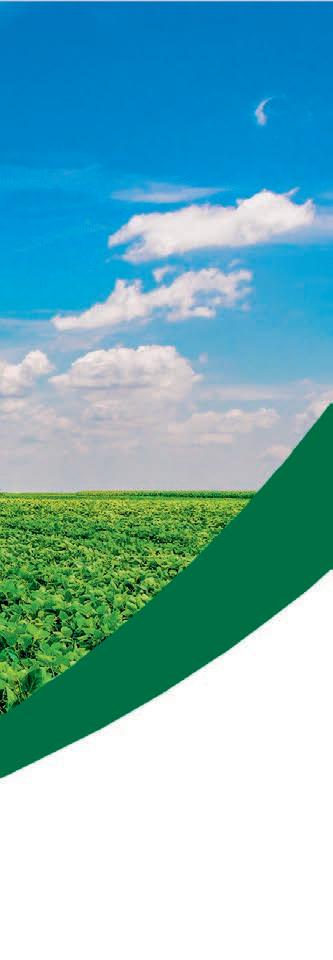
U.S. Soy has the lowest carbon footprint when compared with soy of other origins.
THE Norwegian Seafood Council is planning to spend NOK 408m (£33.2m) on global marketing this year, with more than half that figure promoting farmed salmon and trout.

It is one of the largest national promotion budgets for seafood and will go to most corners of the world.
Børge Grønbech, Director of Global Operations at the Norwegian Seafood Council, said the 2023 marketing plans were ready at the start of October, which gave exporters a good planning horizon and time to get involved in the Council’s activities.
The money will be distributed across 25 markets and through 40 different marketing plans.
Grønbech said the overall goals would be to increase the value of and knowledge of Norwegian seafood, and strengthen the position of Norwegian seafood even in uncertain times.
The Council also aims to make Norwegian seafood more visible and more competitive in the battle for consumers, and place sustainable Norwegian seafood even higher on the agenda.
The investments are distributed as follows between the sectors:
• Salmon and trout: NOK 205m
• Whitefish: NOK 85m
• Conventional: NOK 55m
• Pelagic: NOK 40m
• Shellfish: NOK 23m
Grønbech said that as well as focusing on core markets, the Council would try to open up new areas including Israel, Saudi Arabia and Vietnam.
The US, where sales have been increasing recently, is one country that will receive special attention this year. The Council plans to spend NOK 44m (£3.5m) on the US in 2023, much of which will be spent promoting salmon.

IRELAND is to receive more than €142m (£122m) from the European Union to help develop its aquaculture and fisheries sectors.
The money, which spans the next five years, is from the European Maritime, Fisheries and Aquaculture Fund (EMFAF), which has placed a major emphasis on sustainability.
Around half of the programme’s allocation will be dedicated to sustainable fisheries and conservation of aquatic biological resources.
Including the EMFAF contribution, the total allocation for the Irish programme is €258.4m (£222m) over the period.
Virginijus Sinkevičius, the EU Commissioner for Environment, Oceans and Fisheries, said: “The [EMFAF] programme aims to boost the resilience of the entire seafood sector to accelerate its green transition, as well as to support the coastal communities. The programme will also enhance knowledge to deal with climate change and impacts on marine biodiversity.”
The main focus of the programme will be sustainable fisheries, including investment
BUSINESS tycoon Helge Gåsø has completely cut his ties with the NTS salmon and aquaculture services group, which he founded almost 30 years ago.

According to a recent stock exchange announcement, he has sold his and his family’s remaining 46-million-plus shares in the business, worth a total of NOK 3.5bn (£295m).
Gåsø’s business rival, SalMar founder Gustav Witzøe, has taken over as Chairman of the NTS board following SalMar’s successful takeover bid for the NTS group last year.
SalMar now controls almost all of the NTS shares, making it Norway’s second largest salmon farmer after Mowi. NTS formally delisted from the Oslo Stock Exchange this week.
It is thought Gåsø will now invest most of the proceeds from the sale in his new business venture, Frøy Kapital, which became operational in September and is widely believed to have a capital base of NOK 6bn (around £500m).
in improving energy efficiency to build the resilience of the fishery sector to current high costs and to reduce carbon emissions.
The funding will also focus on research and innovation to promote sustainable aquaculture, and the processing of fisheries and aquaculture products.
This includes investment in developing cultivation techniques that support biodiversity.
The programme also calls for action to increase the competitiveness of the processing sector, energy efficiency and decarbonisation in aquaculture.
“Sustainable sea” and “Ocean Blue economy” are now part of EMFAF’s remit, which will also include the development and economic diversification of coastal and island communities.
Helge Gåsø said last summer: “We have an ambition to be able to raise up to NOK 10bn in investment capital.The motivation is quite simply to help develop even more profitable companies and jobs along the coast and in the region.”
He has also more than hinted that he plans to return to salmon farming.
Gåsø and Witzøe are two intense salmon farming rivals, originally from the same island of Frøya near the port of Trondheim, and the SalMar-NTS battle dominated industry headlines through much of last year.
The main activities of NTS include salmon farming and wide-ranging aquaculture services such as the provision of wellboats and support craft.
SalMar was founded in 1991 following the acquisition of a licence for the production of farmed salmon and a whitefish production plant from a company that had gone into liquidation.
The growth of both businesses has been both impressive and rapid.


DB Schenker has just signed a contract with Avinor, the company that runs most of Norway’s airports.

Securing a site on this scale will, it is hoped, facilitate more profitable routes for the airlines, create a Nordic hub for freight to and from the Nordics, and strengthen import and export opportunities for Norwegian business.
Martin Langas, Freight Manager at Avinor, said it was clear that fully utilising aircraft freight capacity would ensure profitable intercontinental flight routes.
This in turn would give business increased access to markets in Asia, the US and other parts of the world.
Langas added: “So this is a win-win situation and will help to consolidate. By making it possible for large forwarders to consolidate their freight at Oslo Airport, we will be able to make better use of the available capacity by air and road.”
GERMAN
The 4,000sq m hub will not be exclusively for
nature of Norway’s
Knut Eriksmoen of DB Schenker Norway said: “Increased competition means that Oslo Airport will become more attractive to many. So we are looking forward to getting started and hope more players will follow suit.”
This is not the first such hub for Oslo. In March last year, it was announced that an advanced new export terminal for chilled seafood is to be built at Gardermoen Airport following the signing of a deal with the Oslo Seafood and Cargo Centre. That too will handle salmon and other fish.
CERMAQ has stocked fish in the third version of its artificial-intelligence-led iFarm in northern Norway. This time the emphasis is on machine learning.
Its iFarm project is designed to improve the health and welfare of fish in net pens with the focus this time on machine learning.
It has already been tested at Øksnes and Steigen in Nordland, but now the sea site in Steigen is being equipped with the iFarm setup in the net pens.

Cermaq said the operation was manned by the same crew that was responsible for stocking the very first iFarm in Martnesvika two years ago, adding that the team were excited to be able to experience operating an iFarm again.
Site Manager Tor Hansen at Hellarvika, said: “With the first version of iFarm, everything was new and we had an incredibly steep learning curve, but as we got started with operations, we think it worked out quite well.
“Now a number of adjustments have been made both to the setup and to operations based on experience gained in Øksnes, where we now have version 2 of iFarm, so it will be exciting to get started with operations and to follow how the fish thrive in the third version of iFarm.”.
The company explained that during the testing of version 1, the main focus was
on establishing an understanding of how iFarm affected fish behaviour and gaining basic learning about the iFarm construction.
In the testing of version 2, there was a lot of work on alternative versions of the sensor housing and operational adaptations, such as feeding the fish under a net roof, and achieving efficient handling operations in a sea site with a lot of extra equipment in the net pens.
But with version 3 up and running, the focus will be mostly on the sensors, on data collectionand machine learning, and on further development of the mechanism that sorts out fish.
Managing
Director of software expertBioSort Geir Stang Hauge said: “At Hellarvika, we will concentrate on the sensor arrangement to retrieve images with good quality and follow up the annotation of key parameters such as fish ID, lice, growth and fish welfare in the net pen, and on further developing sorters.”
He added: “After a successful test of the first-generation sorter in net pens where we saw that the mechanical sorting mechanism worked with fish swimming through the system, we are now testing the second generation, and we will try to lead the fish from the sorter into another volume through a pipe. The aim is to validate that it is possible to take out individual fish according to specific sorting criteria.”
The sorter will eventually become autonomous, so that together with the sensor system in iFarm it can make its own decisions based on defined criteria, such as the discovery of lice or wounds. The process requires the development of precise machine vision, rapid processing of large amounts of data and interaction with a mechanical sorting unit with its own control systems.
“It’s complicated work, and it’s work that hasn’t been done before, so it’s demanding, but also very exciting,” said Hauge.
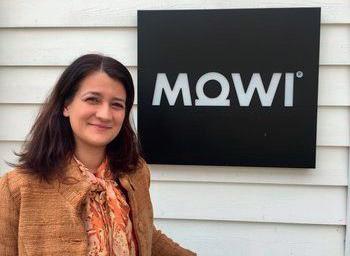 Above: Catarina Martins
Above: Catarina Martins
GLOBAL salmon giant Mowi has been hailed as the most sustainable protein producer for the fourth year in succession.
The title was awarded by the Coller FAIRR Protein Producer Index after carrying out a detailed assessment of the largest meat, dairy and farmed fish producers in the world.
The rankings for each of the 60 companies assessed are determined by a risk and opportunity score across environmental, social and governance-related criteria, including greenhouse gas emissions, deforestation and food safety.
Mowi CEO Ivan Vindheim said: “This shows again that Mowi is at the forefront of sustainable food production. I am proud and humbled to lead an organisation that is a recognised leader in sustainable food production.”

Mowi has consistently scored at the top of the index since the award’s inception. The assessors have praised its robust policies on responsible sourcing, animal welfare, environmental sustainability and more.
Chief Sustainability and Technology Officer Catarina Martins added: “Our ultimate goal is to unlock the potential of the ocean to produce more food for a growing world population in a way that respects our planet, so we are extremely proud to be named the most sustainable protein producer and see our hard work recognised once again.”
The 2022 report found that aquaculture companies, primarily salmon companies, continue to perform better than land animal protein producers. In fact, Mowi is joined in the top four ranked companies by fellow aquaculture companies Grieg Seafood ASA and Lerøy Seafood Group ASA, both headquartered in Norway, who are ranked second and fourth respectively.
Catarina Martins continued: “FAIRR’s methodology continues to evolve, and companies are expected to report more and show progress on more metrics than when the rating started five years ago, so it is becoming increasingly harder to be on ranked on the top.
“Three Norwegian salmon companies are amongst the top four from all the 60 companies benchmarked. This reinforces the recognition of Norwegian salmon farming as frontrunners on sustainability.”
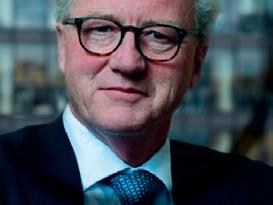
AQUACULTURE biotechnology company Benchmark Holdings has made its debut on the Oslo Stock Exchange’s Euronext Growth market to welcome and congratulations from the market.
Euronext Growth is a multilateral trading facility that mainly falls outside the scope of the Norwegian Securities Trading Act. At opening, the share price was set at NOK 4.5 per share, giving the company an estimated market capitalisation of NOK 3.3bn (£275m).
Euronext said Benchmark was the 13th listing on Euronext Growth this year and the 16th in total on Oslo Børs markets.
The move, said the company, is

the first step towards a listing on the main Oslo Børs and represents a strong foundation for its next growth phase. The company plans to eventually exit from the London Stock Exchange.
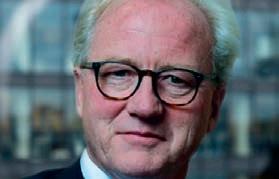

Benchmark CEO Trond Williksen said: “The listing on Oslo Børs is an important milestone for Benchmark that raises the company’s profile in the international aquaculture industry and strengthens the foundations for the company’s future development and growth.”
Benchmark says its mission is to drive sustainability in the aquaculture sector by delivering products and solutions in genetics, advanced nutrition and health.
The bank said RE:OCEAN was revolutionising the seafood industry,with land-based salmon farming of the future at a large-scale facility near the attractive woodland town of Säffle in the south of the country. It will be powered by fossil-free energy and almost all the water used will be in a closed environment.
With its new “ocean-on-land,” it will be able to produce 10,000 tonnes of sustainable and healthy salmon every year. Sweden currently imports most of its salmon, mainly from neighbouring Norway.
The project is supported by Sweden’s three leading wholesale companies – Axfood, Coop and ICA – which see great opportunities in being able to offer consumers healthy and sustainable Swedish salmon.
EIB Vice-President Thomas Östros, who is responsible for EIB operations in Sweden, said: “We are delighted to finance this groundbreaking, major project for sustainable food production.
THE European Investment Bank (EIB) is to provide 530m Swedish kroner (SEK) (£42m) to build a “super green” land-based salmon farm in Sweden.
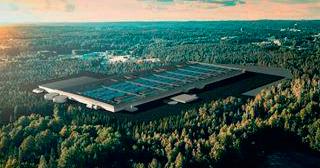
The company behind the project is RE:OCEAN, which is planning to produce 10,000 tonnes of salmon a year by 2026.
RE:OCEAN has been given this generous support because of its commitment to innovative and sustainable food production.
“Not only will RE:OCEAN’s new facility provide the Swedish population with domestically and sustainably produced salmon, but it will also do so in an innovative and climate-friendly way, employing cutting-edge zerowater circulation technology.”
RE:OCEAN CEO Morten Malle said: “The EIB investment is a strong signal of trust and a cornerstone for other investors.”
THE Norwegian government has called a temporary halt to new land-based fish farming applications.

Fisheries and Oceans Minister Bjørnar Skjæran says he wants time to develop a clearer framework for the needs of aquaculture on land against those of sea-based aquaculture.

Compared with traditional sea or fjord salmon farming, land-based farming is a relatively young but fast-growing, sector and seen by many as being more environmentally acceptable.
Land farms are not subject to the government’s controversial
ground rent tax proposal –at the moment. Several applications for such farms are known to be in the pipeline.
The announcement has taken the industry by surprise, although it does feel the rules need to be clarified.
Skjæran stressed that the suspension would only apply until new regulations governing land farms are in place.


He said: “There have been significant technological
developments from those who seek permission for aquaculture production on land.
“This indicates that the industry is innovative and growing rapidly. However, we see that there is a need for clearer frameworks for what is to be considered aquaculture on land, as opposed to aquaculture in the sea.”
He explained the reason for the temporary halt is that there are a number of applications for plans close to the sea.
THE Norwegian authorities have launched a detailed investigation into the escape of at least 87,000 cod from a fish farm in Norway in September last year.
The fish, weighing an average of 600g, escaped from the Alida site in Volda Municipality, north of Bergen, which is operated by the Gadus group.
The circumstances of the escape are not yet clear, but the authorities are worried that the farmed fish are mixing with wild coastal cod.
Norway’s Directorate of Fisheries ordered Gadus to carry out a detailed count of the number of escaped fish with the results showing that approximately 87,000 cod swam loose from three cages.
As of last week, the company had only been able to recapture 408 fish, but the Directorate said it was receiving information from recreational fishermen that they have been catching farmed cod in a nearby fjord.
It added: “In order to increase the knowledge base related to the environmental consequences of cod escapes, the Directorate of Fisheries is collaborating with the Institute of Marine Research on data collection after the incident. We have
This presented a challenge to the differing regulations applicable to aquaculture in the sea and on land.
When permission is given for a land facility near the sea (usually by the local county council), it could in some circumstances fall within the confines of the government’s “traffic light” system, which regulates coastal growth in different zones.
It is important to avoid this, especially for the sake of the environment, said Skjæran.
also started a test fishery in the area and collected samples from the facility.”
It is only a few weeks ago that Gadus said it had achieved a record-breaking first harvest with fish exceeding expectations, reaching an average weight of 4.8kg.
The company, which is hoping to produce at least 30,000 tonnes of cod a year by 2025, operates from seven sites in Norway and employs 80 people.



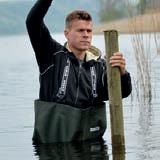
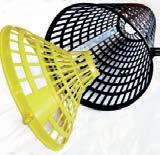








decreased from last year. The cod quota has increased by 18.7% and is 53,374 tonnes, of which the Norwegian quota is 27,755 tonnes. The quota for North Sea herring was 396,556 tonnes and of this the Norwegian quota is 115,001 tonnes.
The cod quota was set at 21,652 tonnes, where the Norwegian quota is 3,681 tonnes before provisions. Cod quota is in accordance with the advice from ICES,and involves an increase from a record low level in 2022.
Catch limits for major fished species have all been increased with the exception of herring, which has had limits cut by 7.3%. Cod fishery limits have been increased by 63%.
The UK government said the trilateral deal has secured fishing catch limits worth £202m to the UK’s fishing industry, representing a £33m increase from last year.
NORWAY struck an important new fisheries agreement in December with the UK and the EU.
While the deal mainly involves the catching sectors of each of the participants, it is also important for Norway’s farmed salmon sector because it avoids the possibility of a wider dispute that might impact on trading for aquaculture.
Fisheries and Oceans Minister Bjørnar Skjæran said: “The tripartite agreement is the basis for the bilateral agreements and it is important that we agree on total quotas for the joint stocks in the North Sea. Total quotas and their distribution are crucial for sustainable management. I am happy that this is now in place.”
In addition to this agreement, Norway is negotiating quota swaps and zone access with the EU.
The quotas vary: some have increased, while others have
Two weeks earlier, Norway entered into a bilateral agreement with Britain that includes mutual access to fishing in each other’s zones, as well as the exchange of fishing quotas involving a number of species for 2023.

“I am very satisfied that the agreement with Great Britain is in place, as it gives Norwegian fishermen predictability,” Skjæran added.
He said: “The negotiations have taken place in a good tone, have been effective and show that our relationship with Great Britain is close and good.”
Fisheries Minister Mark Spencer said: “I’m pleased we have reached agreements with the EU and Norway, and wider coastal states, to secure important fish stocks worth over £450m for the UK fishing fleet in 2023.
“The deals will help support a sustainable, profitable fishing industry for years to come, while continuing to protect our marine environment and vital fishing grounds.”
THE Icelandic government has stalled on a demand by a group of 25 sports fishing and environmental organisations to ban opennet fish farming in the country.
They called on Reykjavik to take action following the escape into a fjord of 80,000 salmon from an Arnarlax farm pen last year.
In 2022, Arnarlax was fined ISK 120m (around £700,000), but it has appealed the penalty, saying it did all it could to prevent such an incident Svandís Svavarsdóttir, Iceland’s Minister of Food, has said she is not ready to take a position over the group’s demand, adding that managing an industry that is sustainable over the long term is proving to be a challenge.



However, the minister confirmed that she would take the group’s views into account when drawing up new policy making on aquaculture.
She said Iceland’s National Audit Office was also looking at regulations and



the legal implication of any new measures.
And when its views are known, it may be possible to take a position on what the group was demanding and on whether any further measures needed to be implemented. She also agreed that national veterinary organisation MAST was right to take such a serious view of the incident.
The fine is the largest yet imposed on a fish farming company for a large salmon escape.
Anti-salmon farming groups, including environmental NGOs and sports fishing organisations, present a constant challenge to Iceland’s mainly Norwegianowned salmon sector, which is watching developments closely.
Salmon farming in Iceland was worth ISK 20.5bn (£117m) last year and has been growing at an impressive rate, with Mowi becoming the latest participant. There are challenges, however, from possible higher taxes and the demands of campaigners who
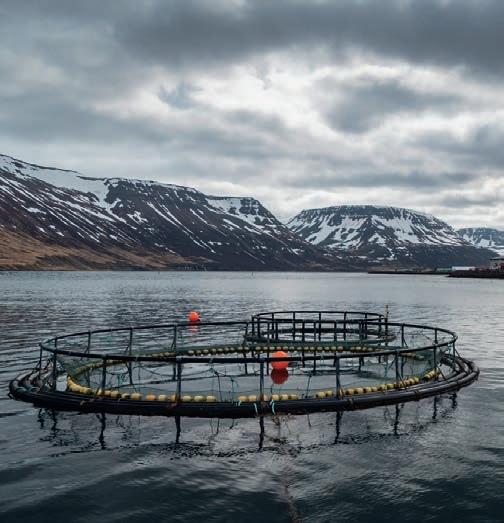
are demanding an end to open-net farming to protect wild salmon stocks.
The Reykjavik government is said to be studying controversial measures to raise more tax from the industry, which have been proposed recently in Norway and the Faroe Islands.
Above:




Seafood Norway is appealing to the Norwegian government to look to the Faroe Islands as a possible model for introducing a new ground rent tax for fish farming.



Seafood Norway says the Faroese system is tried and tested and is also being used by Iceland.
The organisation’s Chairman, Paul Birger Torgnes, said: “It can easily be adapted to the government’s political wishes regarding tax levels, shielding of smaller companies and securing increased tax revenues for both communities and host municipalities.”
He pointed out that the Oslo government had asked his organisation to provide input on tax proposals for the industry and it had responded, putting a lot of work into the issue.
The scheme proposed for Norway, known as the “hydropower model” was not a suitable system for the aquaculture industry, he argued.
Torgnes maintained: “The proposed model is complicated, bureaucratic and administratively demanding for both society and companies.




“The tax proposal has a level and a design that could have major and harmful effects on the industry’s structure, investments, employment and value creation.”
He believes, like several
other consultation bodies, that the government’s proposal is not neutral either, which is a crucial premise for such a taxation to work.
“It is based on extracting oil or gas, or damming a waterfall. Aquaculture is a completely different industry with a complex value chain.
“It is industrial production of seafood where only part of the production is linked to the use of shared seawater.
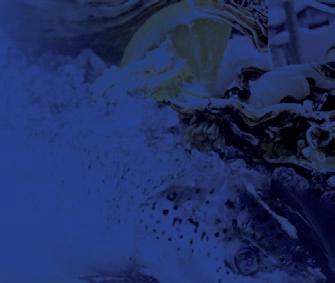
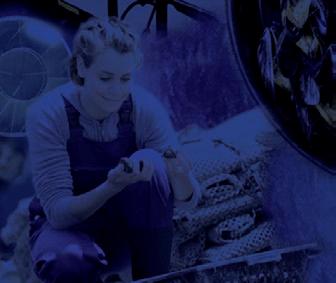






“Sjømat Norge (Seafood Norway) recommends investigating the Faroese ground rent model instead.”







He added: “The government can collect the same amount of tax that [it] has proposed through a more suitable and proven tax model. The Faroe Islands tax aquaculture with a production tax that increases gradually with increasing price levels.”

The Chairman also pointed out that it has been a demanding process for the industry to produce a consultation response.
“Since the government announced the introduction of a new salmon tax at a press conference in September, the organisation has held 14 board meetings, a number of meetings in various industries and regional teams, and several member meetings.


“This has required large resources and much time to analyse the government’s proposals, various tax models and how these will affect a complex and diverse industry such as aquaculture.”
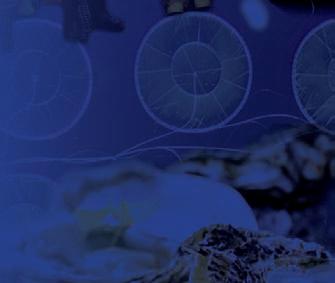
COOKE Aquaculture and the Jamestown S’Klallam Tribe have announced they will each be appealing over the decision to end net-pen fish farming in the US state of Washington.

Cooke is taking the Washington Department of Natural Resources (DNR) to the Superior Court of Washington in an effort to reverse the decision not to renew leases for its two remaining net-pen fish farms in the state.
Cooke’s two farms, producing native steelhead (rainbow) trout, were the last remaining marine net-pen farms in Washington, on the north-west Pacific coast of the US. On 14 November, Hilary Franz, the state’s Commissioner of Public Lands, announced that the leases for these sites would not be renewed,and a few days later followed that up with an announcement that net-pen fish farming would be banned altogether.
Franz said at the time: “There is no way to safely farm finfish in open sea net-pens without jeopardising our struggling native salmon… we, as a
state, are going to do better by our salmon, by our fishermen and by our tribes.”
The DNR had initially given Cooke just 30 days to harvest the fish at its two farms and remove the pens.
Cooke’s preliminary injunction, to secure an extension to 14 April to safely harvest the fish and remove equipment from the Rich Passage and Hope Island farm sites, was upheld by the Superior Court of the State of Washington. The company had argued that the initial harvest deadline of 14 January would jeopardise safety.
Cooke has pointed out that the
strain of sterile rainbow trout grown by the company is the same strain used by the state to stock lakes and rivers throughout Washington.
Cooke has also stressed the devastating effect that the closures would have on its employees, and – in a sign that the gloves are off – explicitly linked Commissioner Franz’s hard line on aquaculture to her re-election campaign, accusing her of launching a fundraising drive on the back of it.
The Jamestown S’Klallam Tribe, which is based on Washington’s Olympic Peninsula, is bringing a separate lawsuit to get the DNR’s state-wide ban overturned.
W. Ron Allen, CEO and Tribal Chairman of the tribe, said: “As a tribe, we have always been conscientious stewards of our natural environment and look seven generations ahead in all that we do. Modern, well-regulated aquaculture is the environmentally responsible solution for producing seafood and exercising our tribal treaty rights – now and into the future.”
THE salmon industry in Tasmania has hit back at its critics, with a robust defence of its track record and strong words for a protest culture that it says is funded by tax breaks.
Industry body Salmon Tasmania has launched a campaign using social and traditional media, with the theme “Tassie, we need to talk about salmon”.
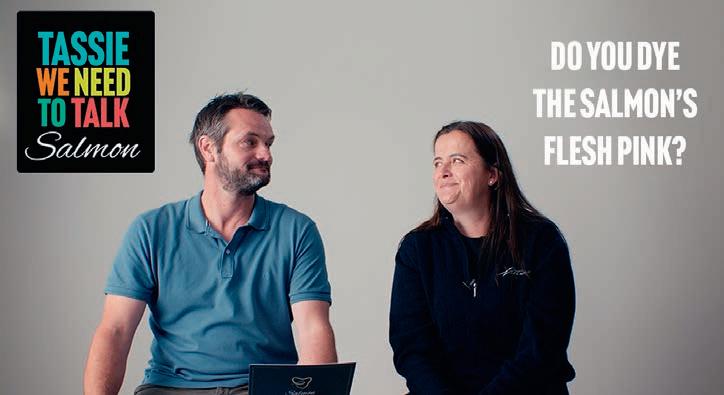
Salmon Tasmania CEO Sue Grau said: “Activists have had a free run up until now. This clear air
has allowed them to mislead the community with what is at times absurd misinformation. The time has come to confront the misinformation head on and have an honest and open conversation with the people of Tasmania.”
Salmon Tasmania points out that previous protest movements have targeted Tasmania’s hydroelectric schemes and the forestry industry, before turning their attention to fish
farming. It claims that the protesters are well funded, with full-time staff and enjoying tax-free donation revenue.
Communications Director Stuart Harris commented: “We are really excited about taking a different approach to dealing with this issue. False stories and incorrect information have been seeded in the community over a long period of time, so we needed a fun and light-hearted way to engage in what is a very serious conversation. We hope that the way we are delivering it makes it something that the community will listen to and that our people will be proud of”.
The campaign addresses questions like “Do you dye the salmon’s flesh pink?”, “Why don’t you just move onto land?” and “Is there mountains of fish poo under the nets?”
The opening episodes of the campaign can be viewed at: www.facebook.com/SalmonTasmania www.youtube.com/watch?v=6pALPOrKPY&t=6s salmontasmania.au/savour
AQUACULTURE group Barramundi has entered into a strategic partnership with Wild Ocean Australia, which will enable it to develop its ambitious plans for expansion in Western Australia.

The Barramundi Group is based in Singapore, Australia and Brunei, farming the fish of the same name, also known as Asian sea bass. Last year, it had warned that its plans to develop up to 13 seawater sites in Western Australia might have to be shelved unless it could find a strategic partner. That partner, it has transpired, is Wild Ocean, which operates a seafood processing, value-adding and distribution business in Darwin, in the north of
Australia. Wild Ocean also owns and operates the Darwin Fish Market retail outlet, which supplies the full range of Australian-only seafood products to the Greater Darwin region.
Barramundi Group has entered into a Letter of Agreement for the sale of 75% of the company’s stake in its Australia business, held under Marine Produce Australia Pty Ltd (MPA), for a consideration of AUS $1.6m cash (£0.9m) with a further earn out payment of AUS $3.4m (£1.9m) to be disbursed upon the approval of at least four of the 13 additional seawater site leases in the Kimberley region of Western Australia.
The agreement also includes Barramundi Group obtaining ownership of 34% of WOA’s shares, which allows the company to retain effective equity majority interest in MPA and gain access to a variety of Australian seafood products for its other markets.
Barramundi CEO Andreas von Scholten said: “Having had a protracted search for investors and a strategic Australian partner for MPA, we are happy to now enter into this arrangement with Wild Ocean.
“The structure of our relationship allows us to retain a meaningful presence and interest in Australia, while at the same time benefit from having a strong local Australian partner who will provide expertise, network and funding for the next phase of MPA’s growth. With our lease applications well underway, the future of sustainable, ocean-grown barramundi in Australia just got much brighter.”
Frank Norton, Director of WOA, said: “At Wild Ocean, we are excited that through the acquisition into MPA, we can fully unlock the potential of Australia’s only oceangrown barramundi… the strategic nature of this partnership is compelling and formidable.”
THE Canadian Aquaculture Industry Association (CAIA) has published seven industry-wide National Salmon Farming Commitments, and all the major Canadian salmon producers have signed up to them.

Canada is one of the first countries in the world to establish national commitments for salmon farming.
The CAIA says the commitments, and their corresponding actions and targets, demonstrate the Canadian industry’s commitment to being the best producers of farm-raised salmon in the world. In summary, they are:
1. Fish health:We are committed to using best management practices and technologies that support the wellbeing of farmraised salmon.
2. Sustainable feed:We support innovation in aquaculture feeds and are committed to the sourcing of environmentally sustainable ingredients that provide high-quality nutrition for our fish.
3. Climate change:We are committed to continuing to reduce our carbon emissions and are equally committed to becoming more resilient in the midst of a changing environment.
4. Food security:We are committed to providing a reliable and healthy source of farm-raised salmon to Canadians to help navigate future uncertainty to communities and boosting food security throughout Canada.
5. Food traceability:We will work to ensure consumers can more easily access the information they want about their salmon meals.
6. Ocean health: We are committed to continuous improvements to farm practices that further protect the marine ecosystem, including the benthic ecosystem health beneath our farms, and to the prevention of plastic waste and debris from entering the oceans from our operations.
7. Public reporting: We are committed to continuous improvements to farm practices that further protect the marine
ecosystem, including the benthic ecosystem health beneath our farms, and to the prevention of plastic waste and debris from entering the oceans from our operations.
The full version can be found online at www.lovesalmon.ca/commitments
All major salmon producers in Canada, as members of the Canadian Aquaculture Industry Alliance (CAIA), have embraced the commitments. The CAIA said: “[We] will continue to work together to monitor and track progress. The goal is to achieve these commitments by 2032 and to transparently report progress each year.”
are patient, gentle and sustainable. We are delighted to bring this truly Scottish salmon product exclusively to Asda stores across the UK.”
When asked about the dedicated production process, Kenny Noble, who has been a master smoker for over 10 years, explained: “These kilns really are magic in lots of ways – the smoke adds flavour and helps preserve the salmon.”
Ashley Connolly, Local Buying Manager at Asda, said: ”We work alongside some wonderful local suppliers to create innovative, affordable, and delicious products for shoppers to enjoy.
YOUNG’S Seafood is the UK’s largest specialist seafood brand and the Extra Special Blackthorn Dry-Cured Smoked Salmon, it said, is one of its most decadent launches to date.
The Extra Special, superior grade salmon (pictured) is hand cured with Ayr-based Blackthorn sea salt flakes, and then undergoes a 30-hour smoking process. This is more than double the usual smoking time for a deeper, richer flavour.
Speaking at the launch in December, Paul Terris, Senior Development Manager at Young’s Seafood, said:
“We have enjoyed a long-standing partnership with Asda and are delighted to bring this exclusive Extra Special product to festive feasts across the UK this Christmas.
“We are very proud of our Scottish heritage and at our picturesque smokehouse in the far north-east of Scotland, our smoked salmon experts have spent many months perfecting the production process.”
He added: “Our salmon is hand cured with Blackthorn sea salt flakes made in the world’s only working graduation thorn tower in Ayr using methods that
“We are delighted to have such a strong relationship with Young’s and our customers always love the Extra Special Smoked Salmon products, especially at this time of the year. The Blackthorn Dry-Cured Smoked Salmon will be a fantastic addition to our Extra Special Christmas range in the lead-up to the festive season.”
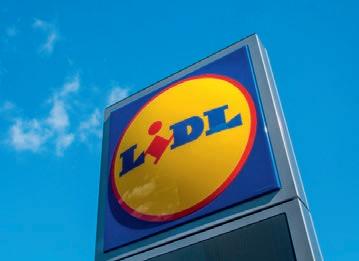
RETAIL chain Lidl has had to recall two Scottish-produced smoked trout products from its UK Christmas range.
A warning was sent out by the UK Food Standards Agency, which said the products Deluxe Oak Smoked Scottish Loch Trout and Lighthouse Bay Smoked Trout Trimmings may be contaminated with listeria monocytogenes (LM).
The supermarket issued a “do not eat” warning due to the potential presence of listeria, which can cause severe health problems.
According to the recall notice issued by Lidl, the affected batch of products are marked with “use by” dates between and including 20 December 2022 and 6 January 2023.
This product recall specifically
affects 100g packs of Lidl Deluxe Oak Smoked Scottish Loch Trout, plus 120g packs of Lighthouse Bay Smoked Trout Trimmings. Only products with the use-by dates listed above are part of the recall.
The UK Food Standards Agency said symptoms caused by this organism can be similar to those of the flu and include high temperature, muscle ache or pain, chills, feeling or being sick, and diarrhoea.
However, in rare cases, the infection can be more severe, causing serious complications, such as meningitis.
Some people are more vulnerable to listeria infections, including those over 65 years of age, pregnant women and their unborn babies, along with babies less than one month old and people with weakened immune systems.
Lidl said that if anyone had bought these products, they should not eat them and should return them to the store for a full refund, with or without a receipt.
The scare follows recent listeria scares over smoked salmon in Norway, where the Food Safety Authority issued an alert, and France, where the retailer LeClerc had to withdraw products.

“We are delighted to bring this truly S cottish salmon product excusively to Asda stores across the UK ”
ICELAND Seafood International has found a potential new buyer for its Grimsby seafood factory, where more than 150 jobs are at stake, the company has announced.
A previous unnamed bidder pulled out of a deal in December, but Iceland Seafood said it had since signed a letter of intent with a new suitor, described as a “respected industry player” .
Both sides said they hoped to cement the transaction by 17 February. If successful this time, this could be a potential lifeline for many of the people who currently work there.
The statement added: “Further updates on the progress made in relation to the proposed transaction and its financial impact on Iceland Seafood will be provided as appropriate. The production site, built originally
for Five Star Fish, is modern and has undergone a number of upgrades since it first opened so it is no surprise that interest has been keen.
Iceland Seafood announced six weeks ago that, despite determined efforts, it had been unable to pull its UK business back into profit, adding that it was no longer a strategic fit for the company.

The business was eroding profitability and the board felt it was no longer justified in continuing with it.
It said that the time of uncertainty following Brexit, along with problems from the Covid pandemic, were mainly to blame.
Iceland Seafood International operates 12 businesses in seven different countries and has recently been growing its smoked salmon base, notably in Spain and Ireland.
THE European and North American operations of Samherji, Iceland’s largest integrated seafood group, have been acquired by a company run by the son of the group’s Chief Executive Officer.


south-west of the country.
THE oldest smoked salmon business in the Netherlands has been saved from closure by a competitor.
In December, the Zalmhuys Group, based in Urk, took over the activities of smokehouse H. van Wijnen at two locations in the Netherlands.
Two months ago H. van Wijnen B.V. was declared bankrupt, due mainly to the very high prices for salmon earlier in the spring.
Zalmhuys Group Director Harm ten Napel decided to act quickly and moved to rescue the business, describing it as an opportunity.
Most of the 130 workers were immediately offered a new jobs while its activities have been continued under the leadership of the existing management team.
Van Wijnen, based in Krimpen aan de Ijssel, is an established name in the salmon world. Founded as a company in 1864, the company grew into one of Europe’s oldest and most prestigious smokehouses, with an annual turnover of €40m (£34.5m).
It produces salmon under the van Wijnen brand, as well as Hendrick’s smoked salmon and John Orrin smoked Scottish salmon, and own-label products for retail customers. It managed to double its sales between 2010 and 2015.
A few years ago H. van Wijnen attracted support from investment firm Nimbus.
A Netherlands-based company owned by Baldvin Thorsteinsson (Þorsteinsson), son of Samherji’s CEO, Thorsteinn Már Baldvinsson) has reached an agreement to buy the assets of Álda Seafood, the foreign operations division of Samherji.

UK-based overseas businesses include Ice Fresh Seafood of Grimsby, which has a fish smoking operation supplying major retailers. They also include a major interest in the Hull-based trawler Kirkella, Britain’s last distant water fishing vessel.
The deal leaves Samherji in Iceland clear to concentrate on its large deep-sea fishing fleet and its ambitious fish farming plans, which include building a large, landbased salmon farm in the
A statement from Samherji Iceland said: “The domestic and foreign activities of Samherji hf. was separated into two independent companies, Samherji and Samherji Holding, in 2018. “Subsequently, the subsidiary of Samherja Holding, Álda Seafood, with headquarters in the Netherlands, was entrusted with the operation of the activities related to the fishing industry in Europe and North America. The ownership remained unchanged.
“An agreement has now been reached on the sale of the assets of Álda Seafood to another Dutch company under the
management and majority ownership of Baldvin Thorsteinsson.
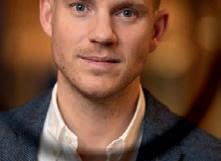
“The new company will now hold Álda Seafood’s holdings in fishing companies in Europe and North America.”
The statement added: “Samherji started operations on foreign soil in 1994. We believed then, and in fact still believe, that the knowledge and experience that resides in the Icelandic fishing industry should be used more widely.
“We exported our knowledge of fishing and processing, on board ships and ashore, but in addition, Samherji Holding has directed its business to Icelandic companies to a large extent during these decades.”

How was your Christmas? I am reminded that the festive season is very much a time when people come together to share food, drink and the pleasure of a mutual experience. Whether fuelled by drink or not, the conversation flows, especially when it comes to putting the world to rights.
Now that the Christmas tree has gone, the decorations put away for another year and all those empties have gone to recycling, it is apparent in the hard light of a January day that the good will of the Christmas festivities has not extended to balanced discussion about salmon farming in Scotland.
If there is a wish for 2023, then it would be that those opposed to salmon farming, for whatever reason, be willing to discuss their concerns and explore how these can be addressed.
Unfortunately, it doesn’t matter whether it is those who only express their views on social media or those who are chief executives of a conservation charity – they all have one thing in common: their blanket refusal to discuss the issues with the most informed in the industry.
By comparison, they are always happy to expound their views to those who know less than themselves because their views are never challenged. This is why the salmon farming industry continues to be the target of a 40-year narrative. After repeating the same story for so long, they think it must be true.
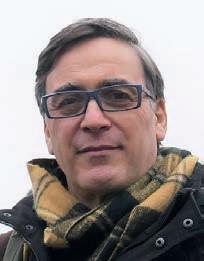
The problem for the industry is that there are effectively three different campaigning groups sending out variations of the same narrative. These are: anglers, the NIMBYs (“not in my backyard”) and the environmental/vegan groups.
As I already highlighted, they all share one common feature and that is a refusal to discuss the issues. They all have a solution, which is removal of salmon farms from Scottish seas, and they are not interested in any other solution.
It no longer matters whether the concerns raised by these groups have either been addressed or are no longer valid – salmon farms must be removed regardless. There can be no other way.
The main theme of the anti-salmon farming narrative is that salmon farms are responsible for the disappearance of wild Atlantic Salmon from Scottish rivers. They reason that there were plenty of salmon in the rivers before salmon farming arrived on the west coast, but after salmon farming had become established, wild
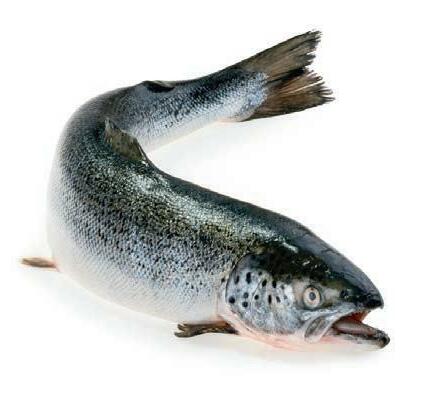
salmon disappeared from many rivers. Clearly, they believe that the common factor is salmon farming and thus if there were numerous fish prior to the presence of salmon farming, the removal of salmon farms would allow wild fish numbers to return to their pre-1980s levels.
Sadly, this simplistic view of farmedwild salmon interactions is not supported by any hard evidence, but this doesn’t stop those propounding the narrative, especially in wild salmon circles. For us in the salmon industry, this narrative is difficult to counter, even when backed by proven science. This is because there is no avenue open to provide the opposing view. The angling press won’t publish anything written by the salmon industry, so readers only hear one side of the story.
Offers have been made to speak at the North Atlantic Salmon Conservation Organisation (NASCO), Atlantic Salmon Trust (AST) and Fisheries Management Scotland (FMS) conferences, all of which have been refused. And whilst the mainstream press seem to prefer articles that paint the salmon farming industry in a negative light, they are rarely willing to publish the industry’s view.
If a positive story does appear, the industry critics claim that it is in some way paid for by the Norwegian billionaires who spend millions greenwashing salmon farming to make it look acceptable.
Of course, it doesn’t need greenwashing because it is more than acceptable to those who eat and enjoy farmed salmon. Critics claim that salmon farming is like the tobacco industry in that it misled the damage it caused to
Opposite: All too often campaigners are not open to hearing opposing views
Left: Falling salmon numbers – who’s to blame?
Those who are dedicated to shutting down the aquaculture sector should take the time to hear the case for the industry’s defence. By Dr Martin Jaffa
Meanwhile, I would ask all the critics, regardless of their motives, that if they are so concerned about the fate of wild salmon, then what are they doing to help
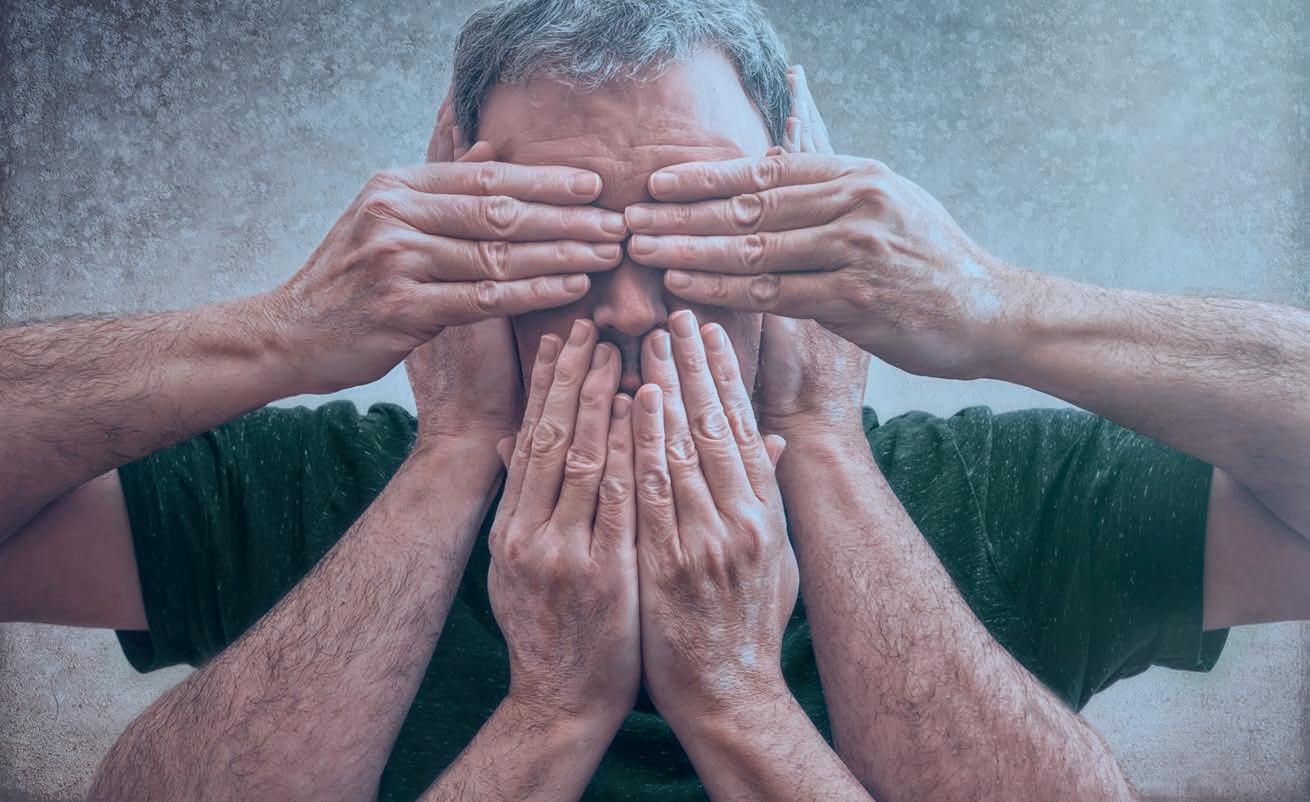
stop the route to extinction other than moan about salmon farms.

Given all the noise about salmon farming, it is easy to forget that even before salmon farming arrived on the west coast, salmon catches from the west coast amounted to little more than 10% of the total Scottish catch. That means that 90% of the catch comes from rivers that are not associated with salmon farming in any way.
Yet as both the AST and Wild Fish state, wild salmon numbers have fallen by 70% over the last 20 years. It would take the most blinkered view to believe that catches from rivers such as the Tweed are impacted in anyway by salmon farming and thus the decline must be for other reasons.
Besides planting a few trees, I cannot see what the wild fish sector has done to protect wild fish except to ensure that salmon farming remains firmly at the top of the blame agenda. Given that anglers have caught and killed around 5.9 million wild fish from Scottish rivers since 1952, it is not surprising that there is a total unwillingness to learn about why salmon farming is not to blame. They might have to start blaming themselves.
I can live in hope that 2023 is the year that talking rather than just blaming takes precedence.
EMPOWERING
”
human health. However, I would argue that the damage to wild fish numbers is simply in the minds of the angling and wild fish sector, and that if they were open to listening to the facts, then they might see that the alleged damage is solely in their imagination.

It was at a recent get-together for one of the country’s oldest and most venerable angling clubs that I noticed it.
There was the usual narrowing of eyes and sharp intake of breath when I mentioned I worked in the salmon farming sector, but this time there was something different.
There was, for the first time, a recognition among some of the most long-standing and traditional anglers that sea lice from salmon farms were probably not responsible for the decline in Scotland’s wild salmon populations.
The question I pose – and which I have been posing to fellow anglers for years – seems to be getting through: “If salmon farms are responsible for the decline in wild salmon and there are only farms on the west coast, why are wild salmon numbers going down on the east coast?”
It is an unanswerable question for those who blame sea lice and fish farms for the decline in their sport and, at last, it seems to be gaining traction.
At this particular gathering, anglers who would have defaulted to blame salmon farms at the drop of a tweed cap were now taking a different approach. There was an acknowledgement (grudging,

certainly, but it was there) that salmon farms could not be held responsible for the big declines in wild salmon populations in Scotland’s dominant east coast rivers. They did insist, however – almost certainly as a last, fall-back position – that there was still a big question mark over the effect of farms on west coast sea trout.
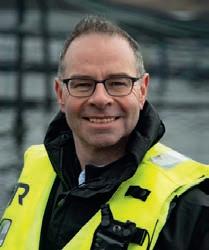
That sea trout issue is a battle we are going to have to win over time, but, leaving that to one side, the shift in attitudes over wild salmon is a very significant one.
I have been mixing with, debating with and fishing with these anglers for years and, up to now, the reaction to salmon farms has been a knee-jerk kick of outright opposition, as if the evidence on damage to wild salmon populations is so incontrovertible there is no need to debate it.
However, like a wide east coast river after days of rain, the waters have become muddied. There is now a recognition that just blaming salmon farms is no longer good enough, that the crisis in wild salmon numbers has reached such a point that hitting out at the only visible potential culprit is not the answer.
There are obviously those on the fringes of the angling world, blinkered obsessives who refuse to look at the evidence, who will never change, but for the thoughtful angler, who actually thinks about the issue, there does appear to be movement.
Part of this is down to that big nagging question about the east coast rivers, but there is more.
Last month, the Scottish government
Anglers are beginning to realise that salmon farmers are not responsible for all their problems.
By Hamish MacdonellAbove: Wild Atlantic salmon Left: Private Fishing notice
released a report into the escape of farmed salmon from the Carradale North farm during Storm Ellen in 2020.
Almost 50,000 fish escaped, yet, after extensive research in rivers in Scotland and down into England, the Scottish government found no significant effect on local wild salmon populations.
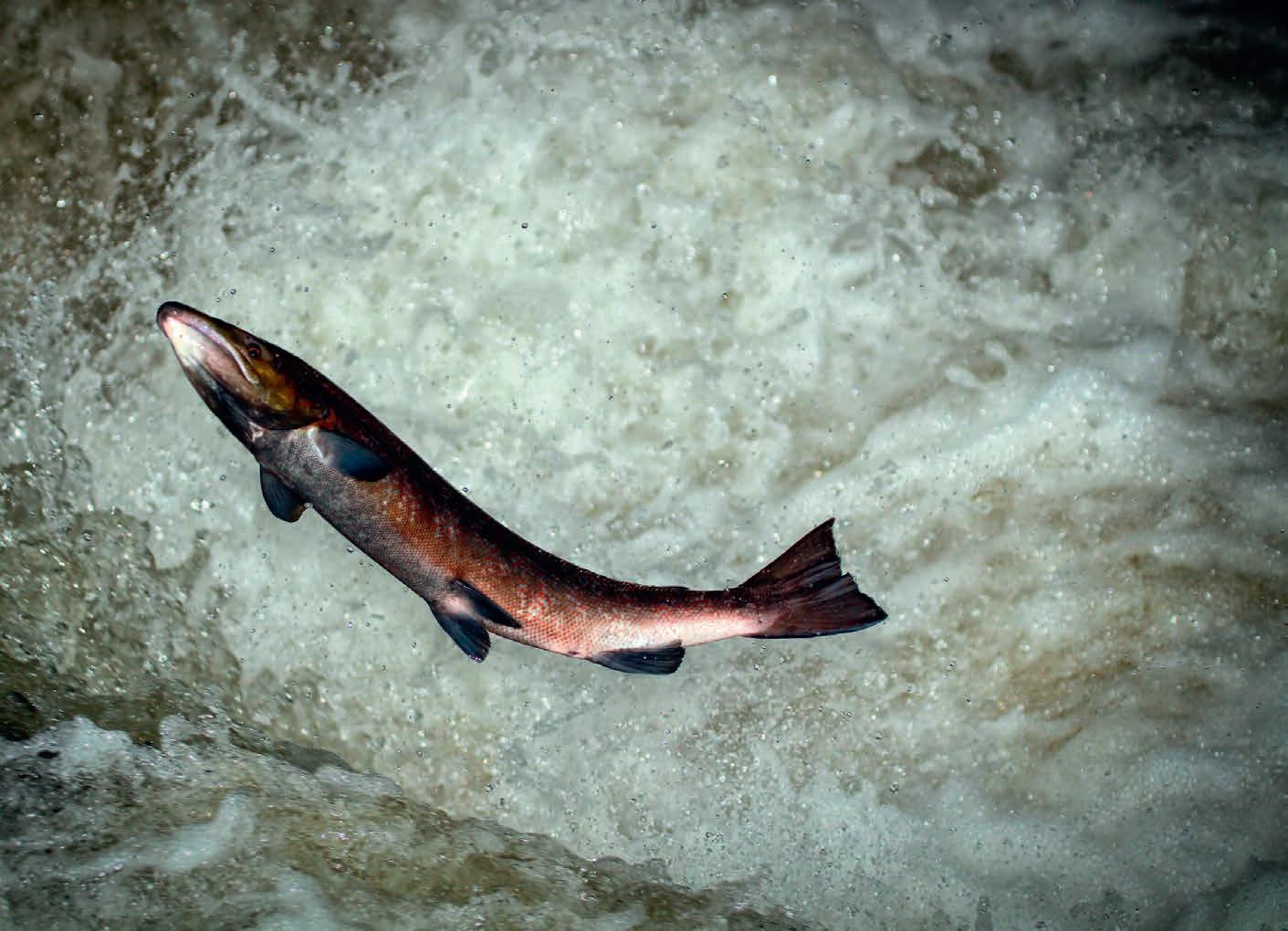
The report stated: “There is no indication that this escape event resulted in significant interbreeding of escaped farm fish with wild stocks.”
This is also hugely significant. Many of us will know from experience that escapes is the second major argument that anglers (and others) use to claim that fish farms are damaging wild salmon stocks.
Yet we now have an independent, Scottish government report that makes it clear that, at best, there was absolutely no effect on wild salmon from a sizeable escape of farmed fish and, at worst case, the effect was minimal.
This gives us powerful ammunition to use every time escapes are brought up as a reason to stop new farms being built or to restrict the ones already in place.
The third major pillar of the arguments used against fish farms is one of pollution and impact on the environment.
We know that farms do not have a long-term effect on the sea bed once they have been fallowed. What we cannot do right at the moment is prove it. However, that remains our aim and, hopefully, we will be able to do that before too long.
For years, a narrative has been established that blames fish farms for the decline in wild salmon numbers, a narrative that for too long went largely unchallenged. But the ground is beginning to shift, which is happening because that particular narrative was not based on science, evidence or data.
What I have detected may only be the first whispers of doubt from previously defiant anti-fish farming anglers, but I do believe it is significant. If we can push back, reasonably and with evidence, then I believe this is an argument we can win, and win comprehensively.
It is probably difficult for non-anglers to appreciate, but the sense of gloom and despondency that has settled on the angling community has become pervasive.
At that angling club dinner, there was an end-of-an-era feel to it, at least as far as salmon fishing was concerned. It was not just that the best days were long gone, but that they will never return.
For a community like that, it is easy – and understandable – to hit out at the new, the visible and the challenging, which is what fish farms appeared to be for many years.
What is harder to accept is a complicated and multi-faceted picture, one that is constantly evolving and involves factors, many of which are invisible and, as yet, undetectable.
But what I have seen and heard does suggest that these more complex arguments are starting to gain ground at the expense of the knee-jerk opposition to salmon farms. That can only be good, not just for Scotland’s fish farmers, but for the country’s vulnerable wild salmon populations too.
The shift in attitudes over wild salmon is a very significant one
”
and is the largest consumer of molluscs. The vast majority of production (97%) is concentrated in the north-west of the country in Galicia, which uses suspended rope culture from rafts.
France, the second largest producer and consumer, grows both blue mussels (Mytilus edulis) and Mediterranean mussels. In 2020, bouchot production (mussels grown on poles driven into the seabed) accounted for 83% of French output and a large proportion is marketed under various quality schemes such as Label Rouge, Traditional Speciality Guaranteed (TSG) and the “Moules de Bouchot” brand.
The latest figures from the Food and Agriculture Organisation (FAO) show that in 2020, around 2.2 million tonnes of mussels entered the global food chain, primarily from aquaculture. This figure rose by 7% between 2011 and 2020.

In 2020, China produced 43% of the world’s mussels, followed by the EU 27 (20%) and Chile (19%). Chinese production has increased by 24% in the past 10 years to 943,000 tonnes and Chilean production by 38% to 409,000 tonnes.
With a couple of exceptions, EUROSTAT data shows that overall EU 27 production has experienced a downward trend of 13% over the past 10 years, particularly in Italy (-36%), Ireland (-36%) and Germany (-35%). Bucking the trend was Greece, with an 11% increase.
The November 2022 European Market Observatory for Fisheries and Aquaculture Products (EUMOFA) report on mussels in the EU shows that EU 27 total production in 2020 was 430,748 tonnes, with Spain accounting for 47% of the total at 204,492 tonnes, followed by France at 61.378 tonnes (14%), Italy 50,913 tonnes (12%), the Netherlands 32,420 tonnes (8%), Denmark 28,548 tonnes (7%), Greece 19,155 tonnes (4%) and Ireland 14,729 tonnes (3%).
The UK no longer features in EU 27 data, but official figures put total production in England, Ireland and Wales at 12,000 tonnes in 2020, down -68% from 2011 and down 75% on the production high of 47,000 tonnes in 2013.

The EUMOFA report points out that Spain, as well as being the largest producer in the EU of the Mediterranean mussel (Mytilus galloprovincialis), has a significant mussel processing industry




Italy, which takes third place in terms of production and consumption of Mediterranean mussels, relies on three distinct growing methods and the majority of production takes place on the Adriatic coastline. Bottom culture is favoured in the lagoon areas of the Po delta, fixed poles in the sheltered lagoon and coastal areas in the south, and suspended longlines in the open sea.
Imports of mussels from third countries into the EU are considerably higher than exports and in 2021, the trade deficit in these molluscs was €104.4m (£62m). Mussel imports are predominantly (91%) processed products and in 2021, amounted to 43,000 tonnes with a value of more than €104114m (£100.3m). The majority are imported from Chile as a cooked product.
France and Italy are the main exporters of fresh mussels from the EU, while Spain and Belgium export prepared or processed mussels. Switzerland and the United Kingdom are the main importers of EU mussel production.

Belgium, with no production of its own, is highly dependent on imports from other EU countries, particularly the Netherlands, and was the largest importer in 2021.
Interestingly, apparent mussel


Above:

Right:

World mussel production continues to grow, but in the UK and Europe the industry is not doing so well. By Nicki Holmyard
How do we encourage people to eat moreTop left: Mussel farming in Jiangxi, China Mussels Mussel farming in France
consumption (production plus imports, minus exports) in the EU was estimated at 537,212 tonnes live weight equivalent (LWE) in 2020, giving an annual per capita consumption of 1.20kg. Apparent consumption in Spain was 167,403 tonnes LWE and 3.54kg per capita, followed by France at 127,337 tonnes LWE and 1.89kg per capita, then Italy with 103,328 tonnes LWE and 1.73kg per capita.
Ireland in contrast has a per capita consumption of just 0.38kg, with the UK slightly higher at 0.40kg per person per year.
The analysis provides food for thought in terms of UK consumption of mussels and plenty of room for growth. The question is, how do we encourage people to eat more mussels at home and order more in restaurants?

In a slight continuation of my “remoaner” column on the need to depurate live bivalve molluscs (LBMs) before exporting them to the EU, we had high hopes that the Trade Partnership Committee (TCP) held on 1 December 2022 might elicit some movement on the situation. The TPC is the
overarching committee that covers all sanitary and phytosanitary (SPS) matters under the Trade and Cooperation Agreement (TCA), and sits above the technical SPS committee.
At an SPS technical committee meeting earlier in the year, the EU was asked for a written response by way of a risk assessment as to the reason for their refusal to accept LBMs from Class B waters in the UK. A reply was not forthcoming and, in October, the UK again requested the risk assessment.

At the December TCP meeting, the UK Co-Chair made the request in a more robust manner, stating that under the TCA, the EU has an obligation to supply such a document.
The EU’s answer was simple and has not changed since Brexit: now the UK is a third country, no trade in B class shellfish can take place. It’s the rule!
Now sorry to shout here, but WHY CAN OUR POLITICIANS NOT UNDERSTAND THIS AND TAKE A TACK THAT WILL GET US SOMEWHERE? Is it because Brexit cannot be seen to have been a really, really bad idea for so many sectors? I for one have been told officially that I need to “reframe my narrative” if I want government to listen, when all I ask is for them to understand the truth.
We thought it would be rational and reasonable for our negotiators to ask the EU to enter trade discussions that would enable the UK to become an approved export country for LBMs. Instead, they have failed us badly, in spite of a raft of information being provided in a brief by the Shellfish Association of Great Britain (SAGB) containing facts and figures about the impacts on UK businesses and also those in the EU that rely on a regular supply entering the processing chain.
After a planned semi-closed fish farm on Loch Long was knocked back, the company turned to Loch Linnhe. By Sandy Neil
Scotland’s first semi-closed fish farm could find a home in Loch Linnhe after a plan to site it on Loch Long was rejected by a national park. If built, it will be Scotland’s largest fish farm by volume.
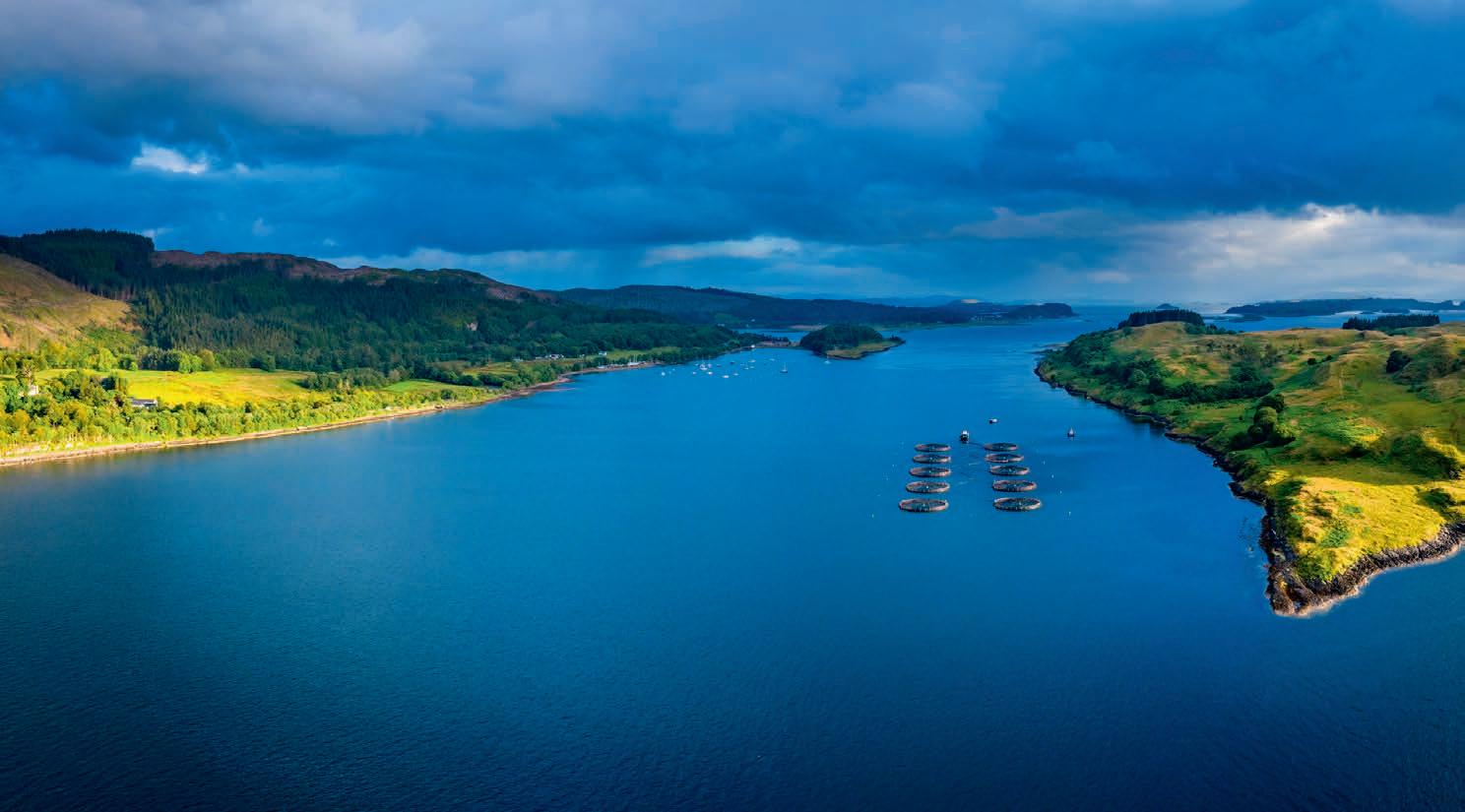
Last year, Loch Long Salmon (LLS), a joint venture between Simply Blue Aquaculture, Trimara Services and Golden Acre Foods, applied to Loch Lomond and The Trossachs National Park (LLTNP) to build Scotland’s first semi-closed fish farm at Loch Long near Beinn Reithe, comprising four circular pens, 50m in diameter.
“Loch Long Salmon wants to change salmon farming for good through leadership and the demonstration of what is possible,” explained the Scotland-based company. “Loch Long Salmon will be the first in Scotland to use semi-closed farming systems that exclude sea lice from the farmed fish and captures, and removes and reuses almost all solid waste in the circular economy.
“From the surface, a semi-closed containment site looks like a traditional salmon farm, but underneath the water, the net is surrounded by an impermeable membrane. This removes the threat of sea lice and attacks by seals, meaning it won’t ever use sea lice treatments or acoustic devices that can harm dolphins or other cetaceans. Hundreds of cycles of this technology in other countries have proven these facts, as well as showing no escapes.”
“It is transformational,” Loch Long Salmon’s managing director, Stewart Hawthorn, told us. “This farming system has been operating successfully in Norway since 2014, and is now being deployed in the Faroes and Canada, but this is the first time it will be used in Scotland.”



An LLS presentation added: “FiiZK and Ecomerden have delivered a combined 23 systems in Norway, Canada and now the Faroes. Eight new installations are contracted for 2022. The
Norwegian Food Safety Authority has approved each site for use of semi-closed containment (fish health and welfare).
Fiskeridirektoratet approves the technology for escapee risk. The double barrier has allowed semiclosed systems achieve a higher reliability class [than] open-net technology under Norwegian Standards 9415 (Reliability class III).”
In a letter to the company, CtrlAQUA, a centre for innovation funded by the Research Council for Norway, said: “We are very familiar with the type of semi-closed technology that Loch Long salmon is proposing and can confirm that semi-closed sea farming systems have been well proven to significantly minimise sea lice and prevent breeding populations becoming established. Less lice infestation has been seen after transfer of adult fish from semi-closed systems [for post-smolts]
This provides an opportunity for sustainable salmon farming in sheltered areas
and Islands; Argyll and Bute MP Brendan O’Hara; and Arrochar, Tarbet and Ardlui Community Council. It was also granted a permit by the Scottish Environment Protection Agency (SEPA). Joe Green, SEPA’s CEO in January 2022, said: “Semi-closed containment systems, such as that proposed by Loch Long Salmon, have the potential to play a significant role in enhanced sustainability through reduced medicine use and discharge.”


A park authority planning officer recommended that the Loch Long site application should be refused, and board members agreed 10 votes to one at a meeting in Arrochar’s Three Villages Hall in October (see Fish Farmer, November 2022, p12).
LLTNP Convenor James Stuart said: “A nationally important landscape is not the appropriate location to host development of such an industrial scale and where the risk of an escape of farmed fish could impact on designated water courses. The semi-closed containment systems proposed – whilst noted as a substantial step forward for the industry – have not yet been trialled in Scotland and there is not a sound body of evidence on which to base decisionmaking.”
Hawthorn said the “inexperienced” board had “missed an opportunity”, adding: “In doing so, it has gone against the wishes of the community, expert advisers, national regulators and a cross-party group of elected officials. The technology being proposed has also been endorsed by environmental groups such as the Atlantic Salmon Trust, the Scottish Wildlife Trust and the Sustainable Inshore Fisheries Trust.”
LLS eyed up waters near Appin and Duror for alternative locations. Before lodging a new application for a semi-enclosed farm in Loch Linnhe, the company submitted a scoping request for Lurignish Fish Farm, asking Argyll and Bute Council what information should be included in an environment impact assessment.
Opposite from top: Shuna Island with exis�ng salmon farm, Loch Linnhe; Stewart Hawthorn
Below: FiiZK semi-closed cage, Norway to open-net pens; prevent escapes of farm raised salmon; and maintain very good health and welfare in the systems shown in several generations.”
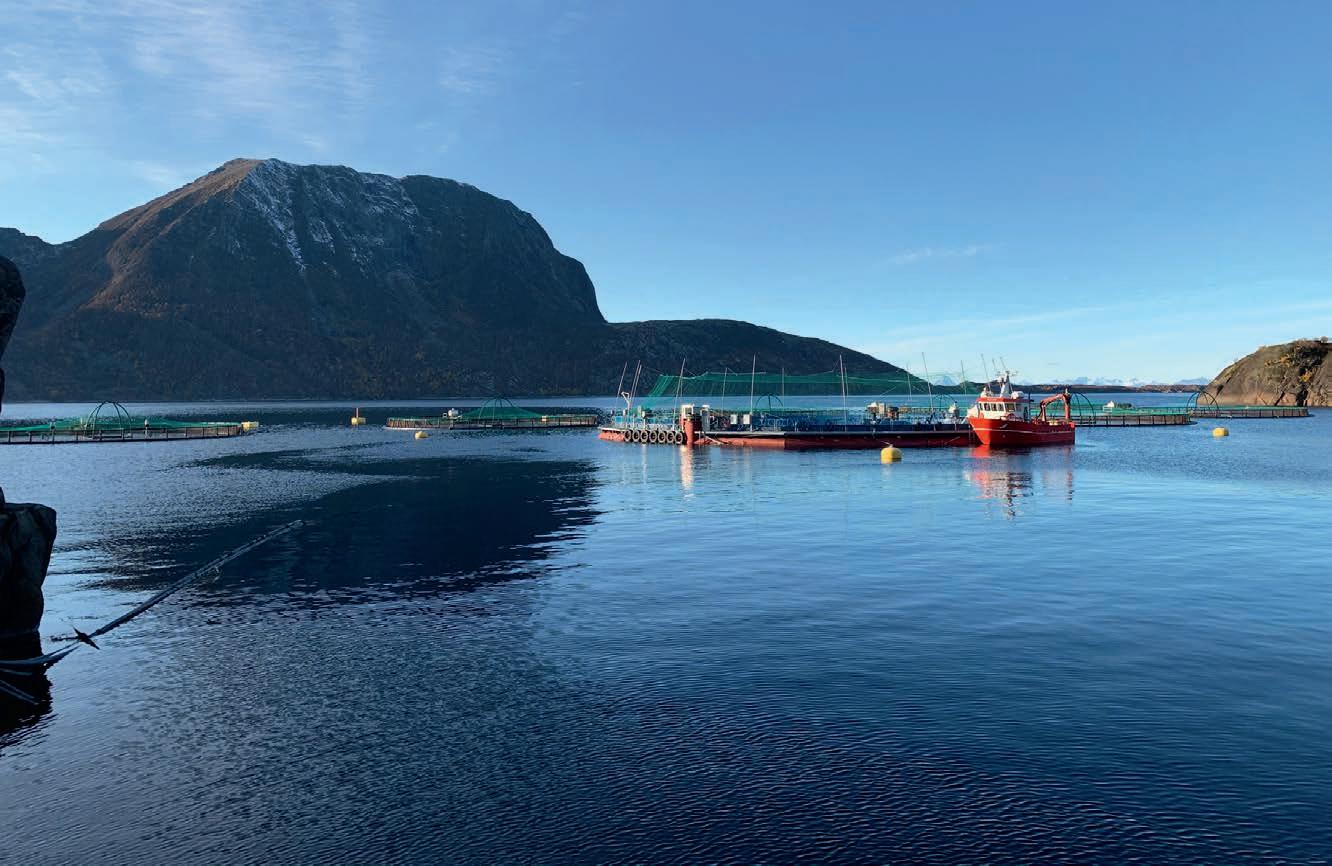







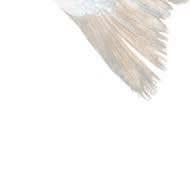




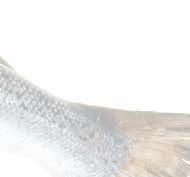

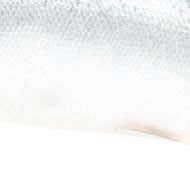
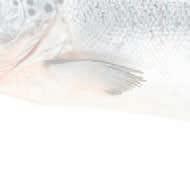





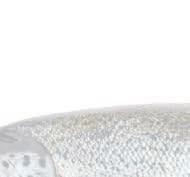

The plan attracted over 200 objections, but also support from MSPs Jenni Minto, Argyll and Bute; and Donald Cameron, Highlands
“When identifying potential sites for a new fish farm,” the scoping request said, “the applicant screened the entire west coast of Scotland against the following criteria: depth of water, shelter from waves, proximity to power and road, Marine Scotland’s locational guidelines for marine fish farms, avoidance of designated protected
areas or priority marine features, distance from other marine farms and suitability for shorebase development. From this study, it was determined that a site in Loch Linnhe was a key leading option for development of a low-impact, semi-closed containment salmon farm.
“Loch Linnhe has a fjordic nature where seabed topography (with shallow sills), freshwater input and meteorological forcing drive circulation. Semi-closed containment technology, however, is designed to pump waste to shore for disposal and, therefore, the complex hydrological profile is less of a determining factor in site suitability. This provides an opportunity for sustainable salmon farming in sheltered areas at an economically viable biomass.”
The site sits 0.5km north of Lurignish Farm, between Shuna Island and Eilean Balnagowan, just on Argyll and Bute Council’s side of its border with Highland Council, 2km away from Shuna Island Fish Farm run by Scottish Sea Farms. It would consist of a marine fish farm – up to eight semi-closed pens plus pontoon – and a shorebase comprising a building, eight oxygen storage vessels, eight feed silos up to 10m high, a wastewater treatment tank up to 13m high, a discharge pipe and a mortality handling station.
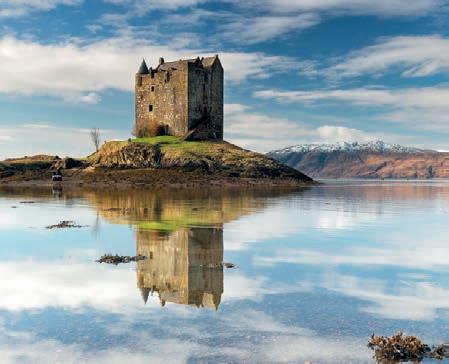
“A proposed production cycle of up to 8,000 tonnes maximum standing biomass is expected,” the scoping request said, making it Scotland’s largest fish farm by volume, but not by surface area, LLS told us. “Each semi-closed unit has a larger water volume, as the farming enclosures are suspended two to three times deeper than typical open-net farms in Scotland. For fewer enclosures we can achieve a much greater production volume. Also, because

semi-closed systems provide a much more optimal, consistent and controlled farming environment, the systems can hold more salmon than conventional open-nets whilst providing an improvement for fish health and welfare.

“By providing a physical barrier around


Loch Long Salmon wants to change salmon farming for good through leadership
farmed fish and by drawing water from 25m deep, fish cannot become infected with sea lice and therefore do not require sea lice treatments and experience less general handling. The fish are also supplied with water that has a consistent oxygen saturation and a far more consistent temperature and salinity.








The wall around the marine farming enclosure (MFE) is made from a flexible, opaque and impermeable material suspended from the float collar and tapering to a point.

Inside the bag is a small mesh net typically seen in salmon farms. This functions in fish handling and management, and provides an additional barrier between the fish and the open water.
The net is intended to aid stock handling for harvesting, grading or transfer, and also acts as a double barrier to prevent escapees. The salmon will be fed pellets during the day and any pellets that are not eaten will sink to the bottom of the MFE and will be collected in the sump.
There will be pipes to house the submersible low-head pumps that hang from the float collar to a depth of 20m to 30m and provide sea water to the system. The inlet pump rate maintains an overpressure inside the bag, which keeps the bag in tension and maintains the bag’s shape and rigidity.


Water exits the MFE through a series of ports; some light fractions of faeces are lost with this water, but the majority of the waste, particularly the heavier fractions, are captured in the sump at the bottom of the system.
Feed and faecal waste settles and collects at the bottom of the system and is pumped out via an external discharge hose, which sends the waste stream to the shore for treatment via a low-pressure surface pipe which forms part of the floating umbilical.
LLS project manager Mark Shotter says: “We capture 85% of the faeces and 100% of the uneaten feed” which, he adds, can be brought ashore for fertiliser or green energy generation.”
In its scoping request LLS explained further: “The wastewater treatment plant will receive the dilute water stream pumped from the individual MFEs and will dewater the waste to a usable slurry or cake with high carbon, nitrogen and phosphate content. The waste may be pyrolysed on site to reduce water content down further producing a very dry and high-carbon form of charcoal.
“The system will be designed to treat the waste without the use of hazardous chemicals. The dewatering equipment has been specified to be at least 95% efficient and all the water removed from the waste stream is safely pumped back into the loch via a discharge pipe on site. The waste

Opposite from top: Certus semi-closed pen from FiiZK; Castle Stalker, Loch Linnhe This page from top: Mark Sho�er; The wrecked Old Boat of Caol, Loch Linnhe
will be collected on a near-daily basis by a waste management specialist operator. The treated waste and will be removed from the site by tanker or truck, and will be suitable to be used as a fertiliser ingredient or an anaerobic digester feedstock. The best circular economy options for utilising waste will be continually reviewed.
“There are two farming models currently being considered: a complete entry to harvest farming model and a post-smolt model. When adopting the entry to harvest farming model, there will be up to eight circular shaped semi-closed containment MFEs on the farm. Fish will be introduced to these MFEs sequentially, with one system being stocked each month over a period of four months.
“Once stocked into the farm, the fish will be reared for approximately 11 or 12 months before the first harvest is undertaken. The largest fish will be removed from the first MFE and transferred into the harvesting facility via a wellboat. This stock will then be harvested over a period of one to eight days.
“This process will be repeated sequentially as the fish reach an appropriate size until the final harvests [resulting in] the rearing enclosure being completely emptied. The harvesting facility will also adopt a semi-closed system [and] will be divided up into four sub-enclosures to allow for a staged harvest.”
The post-smolt model will involve rearing smolt sized 50g to 100g for up to 10 months to 0.7–1.5kg before transporting them live to another site for on-growing. In this model, fish would be entered into the MFEs over a period of weeks. The rearing process would be completed within five to 10 months. The post-smolt fish would then be taken directly from the MFEs on wellboats to other farming sites to complete their growth to an average weight of 5kg-plus.


LLS says there will be an automatic air-lift mortality removal system within each of the MFEs, with mortality removal will take place at least three days a week. The mortalities will be collected at the surface of the MFEs by staff and then will be assessed for cause of death; they will then be stored in containers and transferred to the terrestrial area. Dead fish will either be incinerated on site, put into the mortality handling station on site, or transferred into a sealed container for removal.
The Lurignish Fish Farm is expected to create 16 full time jobs, and an annual community-led benefit fund of at least £100,000. Whether this proposal will get a warmer welcome than its






The next time you put on a jumper or a pair of shorts, the material you are wearing may have started life as a salmon farm cage – after a fashion, that is.


And it is a fashion that the Lerøy Seafood group is using to step up its sustainability drive.











Few people looking at a farm cage would ever think that one day they could wear that or use it to decorate their living room. But that is precisely what is happening.
Lerøy says: “In this age of sustainability, recycling is of increasing importance so that we leave behind the smallest possible ecofootprint.


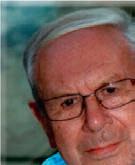















fish farming nets.”


After use, Lerøy’s fish farm nets and other materials are handed over to Nofir, a Norwegian company founded just 12 years ago that collects discarded materials from the fishing and fish farming industries in Scandinavia and continental Europe.





These are washed, sorted and passed on to

We want to be able to recycle or reuse as much as possible
”Nets and pens from fish farming are getting a new lease of life as clothes and household goods, thanks to an innovative recycling process. By Vince McDonagh
“And what could be better than giving something you no longer use to someone who can create something new from it – for example, old
another company, Aquafil, in Italy, where the material is processed to create ECONYL®, a nylon product extracted from plastic marine waste.

So far, Nofir has collected more than 54,000 tonnes of discarded material from fishing and fish farming companies across the world.
Lerøy, which is both a trawler fishing and aquaculture company, is clearly proud of its latest sustainability role.
The project is relatively new, but so far it has handed over 930 tonnes of material for recycling.
It says: “This saves the environment 1,500 tonnes of oil that would otherwise have been used in new production.
To put that into perspective, just one tonne of oil can be used to make 24,000 pairs of ECONYL socks or 10,000 swimsuits.
According to ECONYL, regenerated nylon has a carbon footprint up to 80% smaller than that of virgin nylon.
The various parties in this innovative operation are cooperating with the local clothing industry.
Dressmann, the Nordic region’s leading fashion chain for men, is one of the companies that has used this nylon product in its production. In its shops you will find both jackets and swimming shorts made of old fish cages and nets. “
Lerøy says: “These are clothes you can wear every day, which are as good as any other clothing, and do not compromise on design or quality. It provides the best of both worlds because it is possible to look stylish while thinking about the environment.”
“So, if you are interested in style, smart innovation and a green lifestyle, you may be able to wear clothes and furnish your home with products that have a long history from Norwegian fish farming, years before they arrive in the shops as textiles or blankets.
Lerøy believes it is important for all industries to think hard about the environment and sustainability: “For us as a company this is perfectly natural. Where you travel, you also clean up, and in this
This page from top: Recycled pellets; Recycled material as filaments; Bracenet sneakers, the laces of these sneakers from Hamburg-based Bracenet were made using Nofir’s recycled net materials, while the rest of the shoes are made from other recycled materials and sustainable cork and rubber produc�on Opposite: Predator net
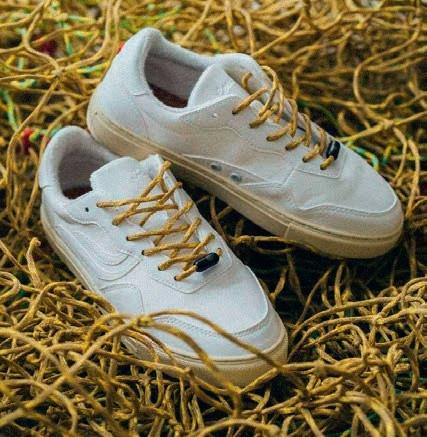
collaboration with Nofir this goes hand in hand.”

Anne Hilde Midttveit, quality and sustainability manager at the Lerøy Seafood Group, says: “We place sustainability efforts high [on our agenda] and we want to be able to recycle or reuse as much as possible. We therefore think it’s great that we can recycle our fish cages in this way. This is also a good example of the circular economy.”
The company argues that by becoming a little more aware of the choices it makes, several people within the business can easily act more environmentally friendly.
“If you choose ECONYL over other fabrics, you also help to recycle already produced plastic. In other words, you can shop more sustainably the next time you buy new clothes. The material used in Dressmann’s clothing is made with the intention of being recyclable forever.”
Nylon is one of several artificial fabrics that release microplastics when they are washed in a machine. Lerøy suggests that consumers should choose quality over quantity and try and avoid washing clothes too often.

The manufacturing process involved in producing ECONYL is kinder to the environment, Lerøy argues. For example, much less water is used and less waste produced than in traditional nylon production.

And the sea itself should benefit. As Lerøy stresses: “Nylon is not biodegradable and it is estimated that up to 40% of man-made plastic waste in the oceans is from nylon. It goes without saying that a material that can reduce this is welcome.”
ECONYL® regenerated nylon is a product introduced in 2011 by international group Aquafil. It is made entirely from ocean and landfill waste, such as industrial plastic, fabric scraps from clothing manufacturers, old carpets and “ghost nets” (lost or abandoned fishing nets). The material has been used by Stella McCartney to make handbag linings, backpacks, outerwear and other products. Aquafil began nylon recycling in the 1990s, but did not begin exploration of a comprehensive nylon reuse cycle until several years later, which ultimately led to the development of ECONYL and the associated closed-loop process in 2011.
 By Heather Jones
By Heather Jones
During the 35 hours I spent interviewing dozens of people from across the aquaculture sector last year as part of my Master’s research, one thing particularly stood out. Whether it was representatives from producers, the public sector, academia, or nongovernmental organisations (NGOs) there was widespread agreement on the most important issues.

Every category of respondent agreed that the environmental impact of aquaculture was one of the top two issues we had to consider when it comes to delivering a sustainable future. There was also consensus that fish survival, health, and welfare were critically important and general recognition that the biggest contributor to the sector’s carbon footprint, by far, is fish feed.

While we all know this last point to be true, there is little recognition or acceptance from some quarters of the substantial progress the sector has made so far on its journey towards sustainability. In the last 40 years or so, the percentage of marine ingredients going into fish feed has fallen from almost 90% to just over 20%. That is an incredible shift and has made a huge difference to the carbon emissions associated with farmed salmon and trout.

In a similar vein, the interaction of farms with wild fish featured in the bottom quartile of issues by three of my four expert groups. Yet, this topic is continually treated by government as one of







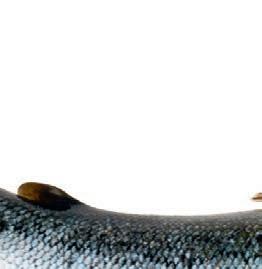




This page from top: Heather Jones; salmon; Bakkafrost Scotland salmon pens Opposite: Fish farm at Loch Ainort, Isle of Skye
the top priorities facing aquaculture’s sustainability credentials, is given disproportionate airtime, and wields undue influence.
Therein lies the rub: differing perceptions and asymmetry of access to information were a significant theme throughout my discussions. So too was the lack of trust in the information that is available and the inability to see it in a wider context, putting aside particular takes on individual issues. This was less true of retailers and nongovernmental organisations (NGOs) who work across species, both of whom had a nuanced understanding of how to assess sustainability across continents, species, and production methods.
The reality is that there is an abundance of independently verified and validated data available on the aquaculture sector in Scotland. There is so much that large amounts of it are not analysed in a considered way – to explore trends over time, for example. Instead, some publicly available data is selectively “cherry-picked” to make a particular, and sometimes very skewed, point.

We need to turn good intentions into positive dialogue in aquaculture.
What we have in the sector is a classic example of latent goodwill and right intentions, undermined by a lack of proper communication and dialogue. There are too few opportunities to build relationships between different parties in aquaculture and that is something we badly need to address in 2023. This could be a new forum altogether, or an enhanced version of one we already have.
The undoubted positive I found in my discussions is that there is a great deal of common ground. Building on it will take time, patience, and active listening.
The more we can facilitate informed dialogue, my hope is the more reasonable positions will emerge – and that can only be positive. Let’s hope the Scottish Government’s “Vision for Scottish Aquaculture” can build on as much of that consensus as possible.


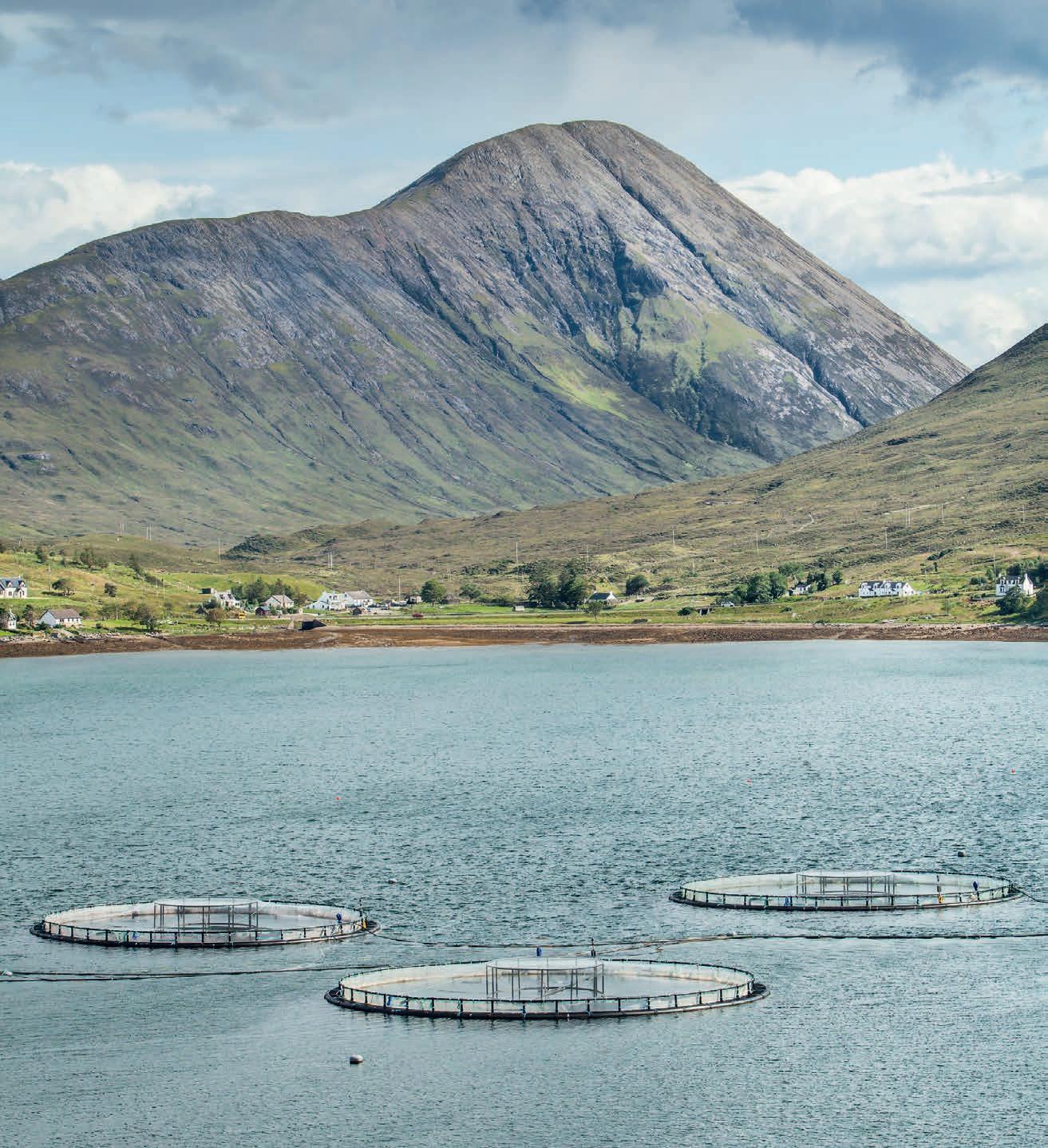
Heather Jones is Chief Executive Officer of the Sustainable Aquaculture Innovation Centre (SAIC).

There are too few opportunities to build relationships between different parties in aquaculture






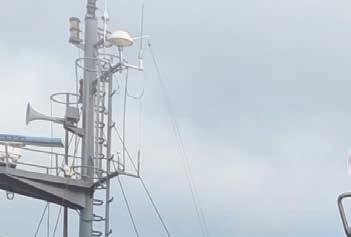






Aberdeenshire-based provider of hydraulic, lifting and mechanical equipment and services, Brimmond, is entering 2023 with a pipeline of new and exciting projects, as well as a new fleet of stock marine cranes available after a recent investment.
Recognising current lead times for new marine cranes are lengthy and causing issues for clients, Brimmond –the exclusive UK and Ireland provider and servicer of Heila Marine Cranes – will have a wide range of cranes available throughout 2023, with four available immediately in the UK from January.

Heila models available in January 2023:
Heila HLM10-3S: 940kg @ 10.3m
Heila HLM25-3S: 2200kg @ 10.5m

Heila HLM25-5S: 1200kg @ 14.7m
Heila HLRM45-5S: 1750kg @ 14.9m
Celebrating a successful year since the partnership with Heila, Brimmond is continuing to stock, rent, refurbish, repair and upgrade a diverse and ever-increasing range of new and second-hand marine cranes.
Managing Director of Brimmond, Tom Murdoch, said: “Heila has been a strong strategic fit for us, and we’re excited to kick off another year as the exclusive UK and Ireland distributor, service partner and agent for Heila Marine Cranes.
“Confirming our commitment to providing our clients with a high-quality product and service, we recently invested in various marine cranes in a bid to reduce lead times for clients. We’re confident this will allow us to offer an even higher level of service to our customers, providing a greater product range and enhanced delivery options.”
Heila is a global leader in the manufacture of specialist heavy-duty marine cranes with over 700 customers worldwide. Heila’s manufacturing facility in Italy has several cranes currently in build for Brimmond stock with four fully foldable versions available to purchase from January 2023.
Technical Sales Manager of Brimmond, Paul Dingwall, said: “Following the impact of Covid-19, supply chains are once again being tested this time by the current conflict which has affected all marine crane manufacturers as they struggle to source materials. This has translated into increased costs and even possible project delays.
“We pride ourselves on our high-quality service, which is a crucial reason for our ongoing client loyalty. The current situation has reinforced our decision that it is imperative for Brimmond to keep stock of Heila marine crane models which should assist our clients who require a quicker turnaround at a secure cost.”
Brimmond recently added two new fully equipped service vans for their experienced team of crane technicians who carry out servicing, maintenance and thorough inspections on client equipment throughout the UK and Ireland.
info@brimmond.com

New technology to support fish farming in exposed offshore locations could unlock an additional £4.2bn in turnover for Scotland’s aquaculture sector, according to startup Impact-9.
Currently, fish farms are often located in sheltered bays and inlets, where production capacity is limited to the level that these water bodies can host sustainably.
A project run by British and Irish companies called Inflatable Marine Products for Aquaculture Containment Technology (IMPACT) aims to show how novel flexible structures and inflatable beam elements can allow marine fish production at ocean locations. Offshore wind turbines could provide an ideal, ready-made secure location to moor these pens, the researchers say.

The technology, Net9, aims to address the safety, fish welfare and cost challenges associated with bringing aquaculture into the open ocean.
The submersible floating structure is flexible and, the company says, is: “…designed to move with the waves and weather any storms, rather than fighting against the water, reducing the potential stress on fish”.
John Fitzgerald, CEO of Impact-9, says: “A move further offshore can pave the way for a new sustainable seafood industry of scale, worth billions of pounds in the UK alone.

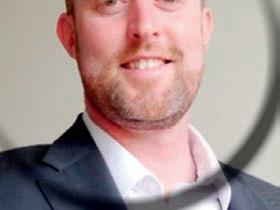

“In the same way that lithium-ion batteries are the key to green transport, we believe that smart, flexible, structural
elements like those used in Net9 will be the enabler of offshore seafood production.”
He adds: “The most exciting part of this phase of work was to see the positive crossover between fish welfare and structural engineering. The potential for stormy weather is of course unavoidable in these environments, but the design of the system allows the net and the fish contained in it to move together with much more flexibility than a rigid structure.”
The company says the Net9 system is one step closer to becoming a commercial reality, with a proven design concept now ready to be tested at scale.
Fitzgerald adds: “Once at full scale, a single Net9 pen could be used to produce up to 2,500 tonnes of salmon per annum, with oxygen-rich waters and conditions that mimic the wild, helping the fish to thrive.
“Impact-9 has identified an opportunity to use the new technology within existing and planned offshore wind energy zones, where a small portion of these zones –around 12 x 12km – would be enough to house 280 pens and quadruple Scottish production.
“The position of wind turbines is typically determined by water depths, currents and the need to avoid shipping lanes, which are also factors that would influence the suitability of a location for offshore aquaculture.”
The breakthrough marks the end of the latest phase of the £200,000 IMPACT project, which was funded by the
Offshore wind turbine sites could double up as salmon farms following a successful R&D project. By Sandy Neil
Opposite from top: How the Net9 technology will be deployed; John Fitzgerald
This page from top: Net9 cage and net; Operational concept
UK Seafood Innovation Fund, with additional support from the Sustainable Aquaculture Innovation Centre (SAIC).
”Engineers from Tension Technology International (TTI) and blue economy project developer Simply Blue Group (SBG) were also involved in the development work, looking at regulatory issues and fish health and welfare, as well as the cost challenges associated with bringing aquaculture into open-ocean environments.
Next year, the research team plans to begin building a unit suitable for technical demonstration at the European Marine Energy Centre (EMEC) in Orkney.
Tom Mackay, engineering manager at TTI, says: “This is part of a systematic engineering approach to address technical novelty, and undergo carefully managed tests to qualify that new features will perform as desired. The process is similar to offshore renewable systems development and we have brought to bear expertise from that sector to help Impact-9 manage the risk of adopting its novel structures in the Net9 application.”
The vision is for commercial offshore platforms, positioned in water depths of more than 60 metres, with submerged containment volumes of up to 125,000 cubic metres.
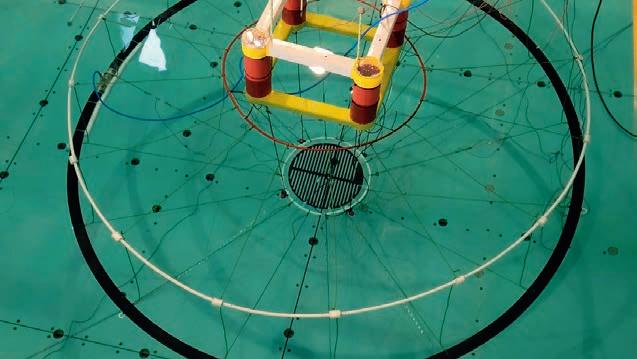
John Fitzgerald told Fish Farmer: “Net9 is generally configured as an open-net system designed for open ocean use and late-stage grow-out in up to 12-month cycles. Our vision includes pairing the Net9 grow-out cycle with coastal semi-closed containment for the early stage, where semi-closed solutions are already cost-effective at producing larger post-smolt for onward grow-out.
“We believe that for late-stage growout, open-net containment in open ocean conditions is the best solution for fishwelfare and economic reasons, while the environmental impacts are mitigated by the natural biological carrying capacity of such a dispersive environment. There are
configurations of the Net-9 architecture that we could envisage for in-fjord sites where waste is collected in the ‘Nadir’, but this is not our focus at present.”
Will biological hazards such as sea lice be less of a problem in highenergy sites? Fitzgerald answers: “It will be naïve to think that these hazards will disappear offshore… the Net9 architecture was devised to have its main open containment submerged below 10–15m, while there remains a ‘snorkel’ within the surface structure to allow access to the surface.

“This can be used to mitigate external exposure to parasitic and other threats in the upper sea layers while also allowing stock to follow their natural instincts to dive deeper during occurrences of storms and larger waves. Once we move to truly offshore sites, we are hopeful that external lice infestation pressure will be greatly reduced given the much reduced connectivity to coastal sites, while in the more unlikely event of infection, the vastly increased dispersion of larvae should also greatly reduce internal re-infestation pressure.
“Couple this with the snorkel and the shorter 12-month late stage grow-out of more robust, larger fish, we can be hopeful that the hazard will be greatly diminished. There is also the opportunity to position farms away from wild salmon migration routes in order to reduce the threat of cross-infection to and from the wild population.
“However, until we start to ‘learn by doing’, we remain vigilant to these threats by design and also the potential threat of new biological hazards.”
Access to the farm sites for management and maintenance could be a problem in heavy weather. Fitzgerald says: “We envisage 12-month grow-out cycles and a ‘return to base’ strategy between cycles. Net-9 is designed to be relatively simple to uncouple from its mooring system and tow to shallower and sheltered harbours for more substantial maintenance. During grow-out, crew transfer for day-to-day operations will be based on similar approaches developed for offshore wind, while the column-stabilised platform is designed to provide a stable and safe working platform over the pen in a broader spectrum of conditions.
“On occasion, there may be longer periods of days or even weeks when crew transfers may not be possible due to weather limitations, and the feed capacity and automated feed distribution and monitoring systems must be capable of basic functionality during these periods.”
There are some well-established players in this field. Fitzgerald says: “Impact-9 will focus on its own strengths, developing a viable system architecture for offshore aquaculture and qualifying that the novel structural elements provide the necessary functionality and reliability. We are also borrowing the systematic engineering development approach from our network of capability in marine renewable energy technology.”
“Many aspects of the Net9 solution, including the central platform and onboard feed distribution hardware, are available as part of the existing supply chain. As we move to commercial implementation, we are open to collaboration with fish farmers to refine the operational models and with offshore integrators, including farm integrators, in order to integrate Net9 with commercial assurances for customers.”
The next phase of the project will see the building and testing of the full Net9-S hardware leading to the deployment of the full system in an unstocked test deployment. The team are working with potential funders and end users to deliver this phase as well as to plan future commercial project opportunities. Impact-9 is also looking at applying a similar design philosophy for seaweed and shellfish farms.
A move further offshore can pave the way for a new sustainable seafood industry of scale
It may be one of the smallest countries in the world, but Singapore is fast building a reputation as a progressive aquaculture research and development hub.
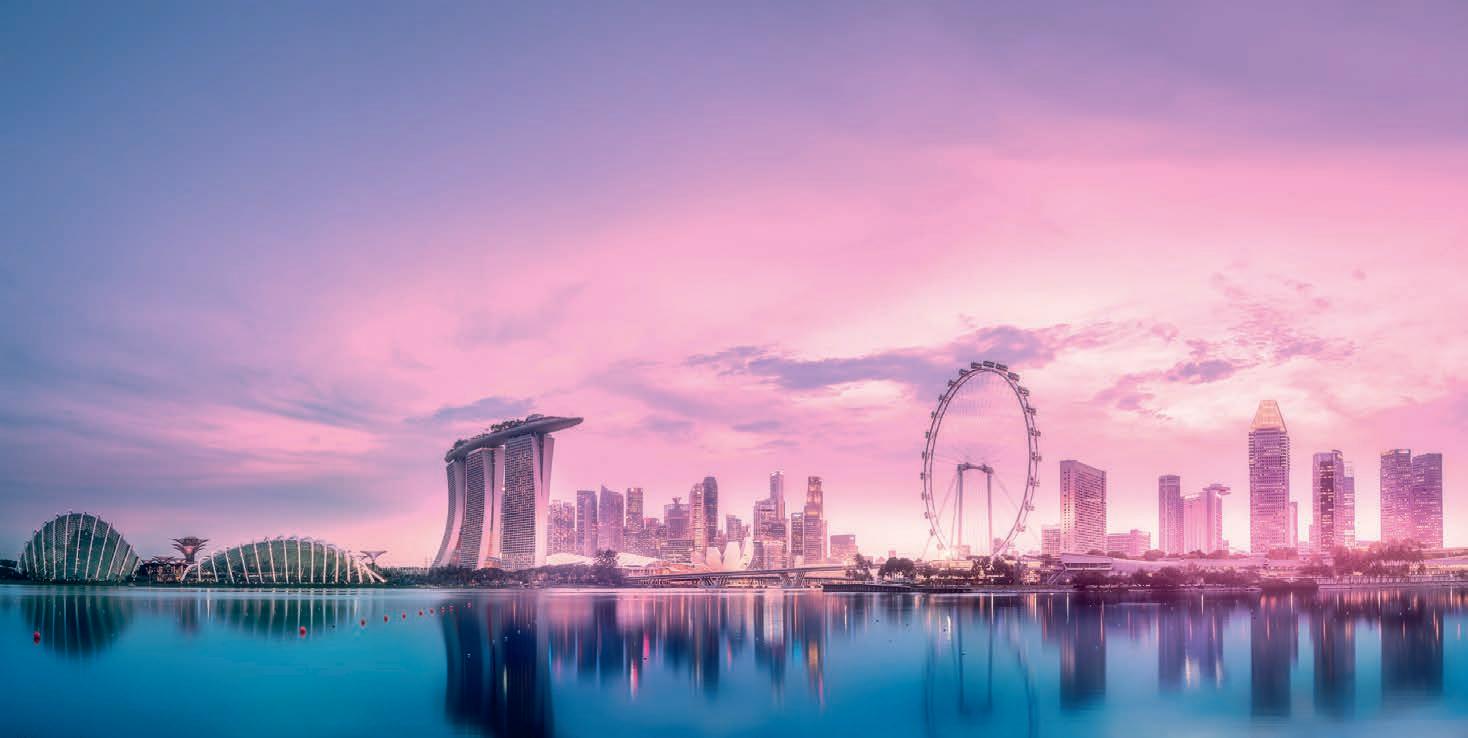
Situated 85 miles north of the Equator, this wealthy island citystate is not a location one might immediately associate with fish farming. Yet, even though it is only a minor player when it comes to practical aquaculture, Singapore is among the leaders in several areas of development and innovation.
Investment has increased fivefold in just a few years, driven by a rising global demand for protein, and Asia is home to more than 80% of the world’s aquaculture activity.
Last year Siemens paid almost US $7m (£5.6m) for a significant minority stake in Singapore Aquaculture Technologies, innovators in closed containment systems for fish farming.




A recent case study by the European Market Observatory for Fisheries and Aquaculture (EUMOFA), says Singapore is now home to a number of industry-related institutions and companies.




One of those is the Singapore Food Agency’s (SFA) Marine Aquaculture Centre (MAC), which provides research facilities

and access to biological materials, and undertakes research and development in tropical aquaculture production cycles.






















The development of aquaculture technology – such as genomic selection, biosecurity and genomic improvements – is moving into top gear and taking aquaculture from low to high tech.
It is a development that has the full backing of the Singapore government, which is keen to increase its food security. The SFA has set a “30 by 30” target, which includes producing 30% of Singapore’s nutritional needs by 2030.
The EUMOFA report says the “30 by 30” target was launched in February 2021 and was included in the Singapore Green Plan 2030. In order to reach this target, the SFA is funding 12 projects, eight of which focus on





This page from top: Singapore, view across Marina Bay; Marine Aquaculture Centre, Singapore; Barramundi, also known as Asian sea bass
Opposite: Singapore Eco-Ark closed containment structure
Singaporeans eat a lot of fish – now they are looking for ways to produce more in the city-state. By Vince McDonagh
aquaculture, to the tune of $23m (£18.5m).
In addition to these eight SFA-funded aquaculture projects, other innovative moves are planned. One company, Singapore RAS, is working to produce 1,000 tonnes of Atlantic salmon a year using a recirculating aquaculture system (RAS). It hopes eventually to grow this to 3,000 tonnes over time. Benchmark will provide the company with genetic services and supply ova from its Icelandic facilities as soon as the hatchery and freshwater site is in operation, which is projected to be later this year.
The Apollo Aquaculture Group has constructed an eight-storey land-based fish farm, based in Lim Chu Kang in Singapore. It aims to produce 2,700 tonnes of fish (hybrid grouper and coral trout) with its own RAS technology later this year.

Singapore is also home to a number of food-related research institutes and universities, which are working with the SFA and the island’s MAC, both of which are playing a leading part in tropical aquaculture research and development.
MAC’s facilities include replicated tank systems and incubator space, and are open to companies for research and testing. It can also provide key biological materials such as eggs, larvae, rotifers and microalgae for aquaculture research.
The centre is able to focus on genetics and broodstock development. For example, through its partnership with Temasek Life Sciences Laboratory (TLL), it has developed a selective breeding programme for Asian sea bass (also known as barramundi) using genetically superior lines that are able to produce fry that grow at least 30% faster than unselected sea bass.
The MAC has also undertaken research and development in large-scale hatchery production technology to ensure the longterm sustainable supply of marine fish fry. This has led to a tenfold improvement in Asian sea bass fry survival and enabled production at 100 times the intensification found in the prevalent outdoor pond system. One business that has benefited from research on the island is shrimp farmer Vertical Oceans. Shrimp farming is land hungry and can destroy large areas of coastal mangrove forest, but working with MAC Vertical Oceans has been able to develop a modular, stackable ecosystem for indoor shrimp farming.
The prototype was based at MAC, produced 10 harvests in its first year – over
a tonne of shrimp in total – and is delivering what its founders claim to be “the healthiest and most sustainable protein in the world”.
MAC’s vision is to see “the world’s first truly vertical seafood production system” installed in every city of the future, making seafood production so efficient “there will be no need to take seafood from the oceans ever again”.
Vertical Oceans was developed by John Diener, formerly a divisional managing director at Singapore-based animal feed manufacturer Gold Coin Aqua Group; and computer and data scientist Enzo Acerbi. The company delivers fresh prawns to consumers in Singapore on a same-day basis.

Vertical Oceans is now looking at a scaledup commercial facility capable of producing 1,000 tonnes of seafood a year.
AquaPolis involves the Singapore Food Agency (SFA), the National University of Singapore and the TLL. Under the initiative, seven fish farms will work with the institutions’ researchers to tackle a number of challenges.
These include warmer waters resulting from climate change leading to higher levels of viruses, bacteria and parasites in the seas.
Singapore newspaper the Straits Times says this worries Barramundi Group, which grows Asian sea bass in offshore sea farms in Singapore, Brunei and Australia.






The aquaculture firm hopes to work with researchers to develop solutions to tackle pathogens that affect barramundi, says Mr Tan Ying Quan, its head of operations in Singapore.
“We need solutions to solve the challenges today and also build capabilities to deal with “Disease X” in the future, he told the Straits Times
DUE to sea and land constraints, aquaculture production in Singapore is relatively low, says the EUMOFA report. In 2020, the production volume from aquaculture was 4,829 tonnes
Due to small freshwater reserves in Singapore, 80.5% (3,891 tonnes) of the aquaculture production in 2020 was marine based.
Freshwater aquaculture makes up 13.9% (673 tonnes) of the total volume. It includes production of such exotic types as the American bullfrog, Indonesian snakehead, and Mozambique tilapia.
Most of the aquaculture production in Singapore is from cage-based production sites in the sea. The 110 sea-based sites that are in coastal and southern waters contribute to 85% of fish production in Singapore.
Most of these coastal sites are open-net cage farms, with wood structures and 200-litre drums for flotation. Locally produced farmed fish makes up 10% of the total fish consumed in the country.
The development of aquaculture technology… is moving into top gear
Underwater robots have made larger and deeper offshore fish farming possible. The world’s top selling robot of its class is the Saab Seaeye Falcon, which can work continuously in deep and challenging conditions at tasks starting with initial site surveys and environmental studies, through installation, mooring checks, net checks, health monitoring, net cleaning and mort removal – and finally installation removal. Owner of three Seaeye Falcons is Chile-based Underdeep Solutions who deploy theirs for inspecting nets and moorings and when fitted with manipulators, for performing light work tasks around fastenings and buoys, and collecting and recovering items. Their 1000m-rated Falcon is fitted with a fivefunction manipulator, a soft rope cutter, an HDTV camera, B&W reverse camera, multi-beam sonar and acoustic positioning system. Pictured below is Chile’s Underdeep Solutions team deploying their 1000 metre rated Seaeye Falcon fitted with an underslung heavy duty five function manipulator for light work duties in and around nets. www.saabseaeye.com

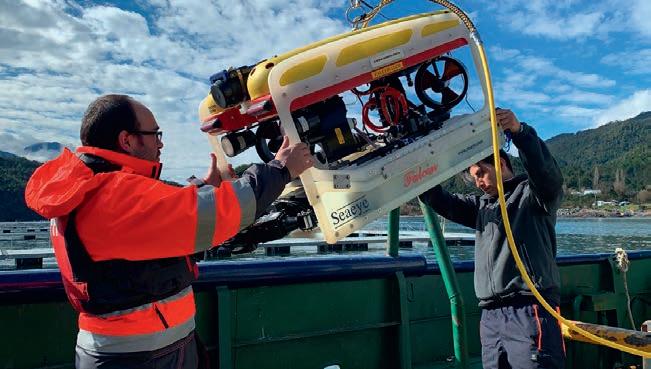
Ocein AS (Ocein Innovation) has developed a remotely operated vehicle (ROV) based on the same platform as its successful Stealth Cleaner.

Ocean’s machine is a very powerful ROV for its size, designed for all kinds of inspections on a fish farm, especially long mooring lines. Smooth rounded edges also make it perfect for inspecting nets. The ROV has numerous connections with the capability to add a variety of specialist tools. It has been out in the market for a year now and feedback from customers has been positive.
FormoreinformationontheROV,Ocein’sStealthCleanerandOcean’s officesinNorway,ScotlandandChile,turntopage48ofthisissue. www.ocein.no/en/
Norwegian research institute SINTEF, in collaboration with SFI Exposed, is developing systems that will help to boost fish farm safety and security under harsh sea conditions.
The approach makes use of artificial intelligence and “deep learning” to develop systems that can identify irregularities in salmon cage nets. This is done by feeding a digital neural network with images showing the building blocks of an intact net. These images then enable the programme to react when it observes something out of the ordinary, such as a hole.
Using a camera mounted on a remotely operated vehicle (ROV), or even on a robotic arm, the system could help to meet the tighter regulations that the Norwegian government is expected to bring in soon, which will require more frequent inspections of nets and cages at fish farms.
Anew diving standard for the aquaculture sector that will further improve safety procedures could be in place by spring this year.
Driven initially by Scottish Sea Farms, the initiative has support from other salmon businesses and from diving contractors operating in Scotland.
At present, there is guidance from the Health and Safety Executive (HSE) in the form of an approved code of practice (ACOP) for inland/inshore commercial diving projects, but there is currently no standard or guidance specific to aquaculture.
Jonathan Watt, Training Manager at the Professional Diving Academy (PDA), says the move towards a standard has been a long time coming and will formalise changes already taking place.

He explains: “The main stipulation of an aquaculture standard would be the technique used for dives. Currently, divers can either use SCUBA equipment – a self-contained cylinder on the back – or surface supply, whereby the air they breathe is fed from the surface… SCUBA presents an inherent risk to divers, with its limited supply of air, and moving to surface supply would negate this risk.
“SCUBA has been used less over the past 15 years, with many diving contractors now using surface-supply equipment, the method advocated by the HSE. But some contractors working in aquaculture still use SCUBA equipment. Under the new proposal, all diving contractors working with fish farm clients will be required to use surface-supply equipment.”

He adds: “It’s often not appreciated how big a diving sector aquaculture is and how potentially big the risks are for divers, particularly regarding the water depth and the nature of the work.
“A standard diving profile [a diver’s pressure exposure over time] usually sees the diver leaving the surface, maintaining a certain depth for a certain length of time, and then returning to the surface at the end. At fish farms, there is more going up and down – what we would call a ‘bounce dive’.”
Although bounce diving takes place elsewhere in the sector, it is generally restricted to reasonably shallow water. Many of the fish farm sites are in deep water, increasing the risk significantly. Most diving companies working for the aquaculture sector have access to surface-supply equipment. Under the new, voluntary standard, the use of SCUBA at farms would have to be independently approved.
Scottish Sea Farms Head of Health and Safety, Gerry McCormick, says: “Diving is one of the most hazardous aspects of our sector, but holding people accountable to standards will make it safer.”
Other provisions in the standard would include tighter controls, with contractors being audited by independent diving consultants. While businesses such as Scottish Sea Farms already audit diving contractors, the new approval process would involve a more technical assessment conducted by diving consultants, and would “add another layer of safety”, says McCormick.
The new standard will be produced by the PDA, supported by the Association of Diving Contractors (ADC) and the HSE. A guidance document is to be produced by the ADC. The next step will involve a salmon aquaculture working group sitting down with the PDA and the ADC to agree terms.
Alastair Baird, Director at the PDA and Scottish board representative at the ADC, says all the main diving contractors are on board: “About 80% of the contractors involved in aquaculture are planning to discuss this specifically when the Scottish ADC meets in the spring.
“Once a draft standard has been drawn up and approved, and all the players in the sector are happy, we could produce something in the first quarter of the year.
“It’s a welcome change for various reasons, safety being at the heart of it. Companies that can only fulfil SCUBA type work have limited commercial opportunities.
“With a move to surface supply and an increased awareness of the amount of career opportunities available in the aquaculture sector, you may see an increased interest in the number of divers choosing aquaculture as a viable career path.”
is one of the most hazardous aspects of our sector
A new standard will set out to make contractors’ work at fish farms less risky
No one saw such a quiet-running and efficient net cleaner as StealthCleaner coming – nor do the fish. The StealthCleaner is very quiet running, reaches into every part of the net, cleans fast and efficiently, has several tools available that can be connected – and you can also use the four cameras for inspection and documentation.
More than one hundred million square metres cleaned – without any damage to any net!
The unique triangular shape allows the StealthCleaner to reach every part of the net and be manoeuvred in all directions. The special nose disc lets you easily access hard-toreach places such as corners and fastenings to the bottom ring.
The revolutionary combination of pressure and flow gives you a completely clean net without any wear or damage. The design of body and side grids keeps the cleaner fish safe from injury.


Swims at up to 4 knots with no high frequency sounds – which will stress and disturb the fish only minimally.
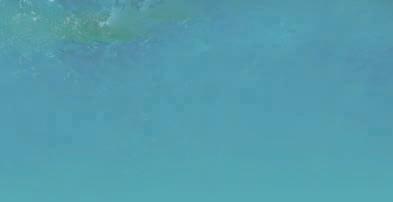



The StealthCleaner is very efficient as it uses large amounts of water at a low pressure to clean the net. With its 21 kW of thruster force, it is the most powerful net cleaner on the market.
Learn more, request an offer, and see the StealthCleaner in action:
Ocein.no/en/en-StealthCleaner | Tel.: +47 412 96 500



Ocein AS (Ocein Innovation) develops technology and smart solutions for seawater fish farming. The company was established in 2018, but utilises 25 years of experience in diving, remotely operated vehicles (ROV), and maritime operations in aquaculture, oil and gas, and the construction industry. We manufacture using reputable suppliers and aim to deliver the best quality on the market. Ocein is located in the coastal town of Kristiansund, with branch offices in Trondheim, Inverness (Scotland) and Puerto Montt (Chile). We provide products and services to customers worldwide.










In the last year, we started up Ocein UK with an office and workshop in Inverness. We have installed eight Stealth Cleaners with Kamat pump units and now have more than 100 Stealth Cleaners in the fish farming industry worldwide.

The Stealth Cleaner has been well received in the market, so we decided to make an ROV built on the same successful platform. The Ocein ROV has now been out in the market for a year and we have received very good feedback from our customers.
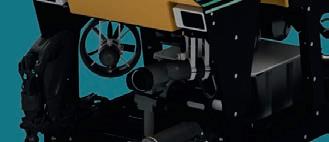

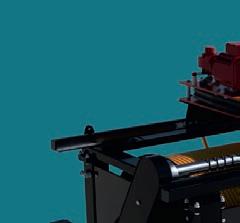
To find out more about our products, go online to www.ocein.no/en/



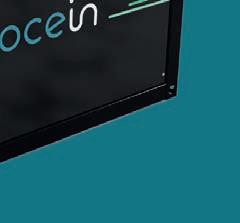



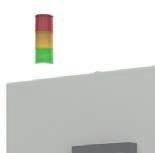
Redox AS and Proff Kulde AS have entered into a strategic cooperation agreement to provide hygienic and energy-efficient storage solutions for stun and bleed vessels, and the refrigerated tanks to which the fish are transferred after slaughter.
The cooperation will combine Redox’s solutions for regulating water quality and hygiene with Proff Kulde’s CO2-based RSW (refrigerated sea water) cooling system.
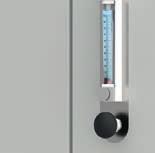


Redox will contribute with water purification and oxygen systems, a filter and UV system for treatment of inlet and discharge water, an automatic cleaning system including ozone disinfection, and a logging system for the monitoring and documentation of all processes.
Both Redox and Proff Kulde are owned by seafood investor Bluefront Equity.
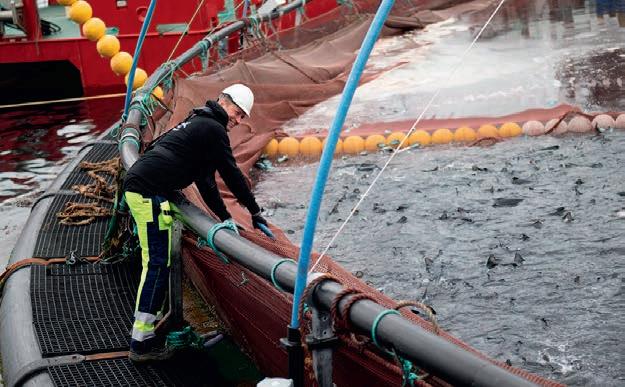

Balmoral blutanQ coated steel tanks, developed specifically for RAS, are built to last. That’s the message from Jonathan Smith, Sales Director at Balmoral Tanks.

He adds: “They are easy to install, clean and maintain, while all tank fixtures, nuts, bolts etc are capped or coated to prevent corrosion. “Tanks can be specified for exact species and location, and can be used for every stage of production.”


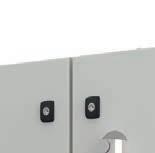
The independent Scottish engineering company, with over 40 years’ international tank design and manufacturing experience, offers assistance from specification to after -ales support wherever your project is located.
For further blutanQ information, contact Jonathan Smith directly at jonathan.smith@balmoral.co.uk
In 2019, the entry into the global aquaculture market by BIO-UV Group, a water treatment specialist for over 20 years, took a further step forward with the acquisition of Triogen®, the Scotland-based manufacturer of UV, Ozone and AOP systems.

Ozone is a simple and effective way to break down particles and remove contaminants in water recirculation systems used in aquaculture.
It is an oxidative process that disinfects and oxidises organic and inorganic pollutants, while increasing the concentration of dissolved oxygen in the water. The result is exceptional water quality and improvements in both the quality and quantity of fish production.
By keeping the water clean, aquaculture operations can optimise the renewal of water in ponds, therefore reducing water consumption. BIO-UV Group provides a range of high-quality systems for recirculating aquaculture systems (RAS) and wellboats.
www.bio-uv.com
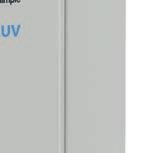





South Korea’s first commercial recirculating aquaculture system (RAS) farm is due to start production later this year – and it won’t be producing salmon.

While Norwegian-owned Salmon Evolution plans to start construction on its RAS salmon farm joint venture early this year, BluGen will be producing another high-value species, olive flounder.
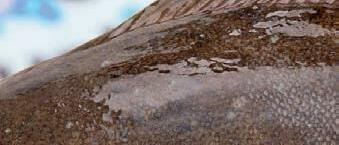
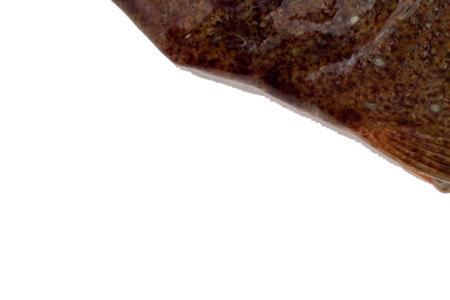

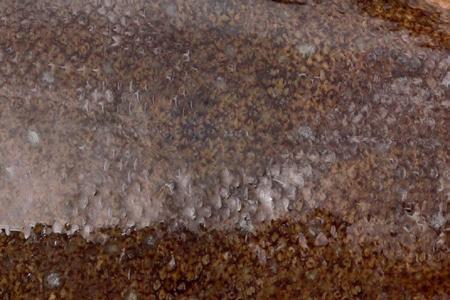

A flatfish also known as “bastard halibut” – or “hirame” in Japan – olive flounder (Paralichthys olivaceus) is highly prized by connoisseurs of sushi and sashimi.
As Dr Woo-Jai Lee, CEO and founder of BluGen, explains: “In Korea, olive flounder is predominantly consumed raw, as sashimi,




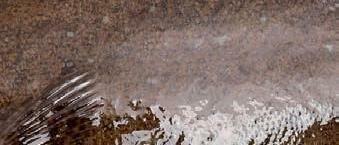










since it’s favoured for its texture and flavour. Other flatfish, such as halibut or turbot, are typically consumed grilled or as steaks (instead of raw), since they have firmer textures. In Japan, it is mainly consumed as sushi or sashimi. Since olive flounder is a whitefish, preparation is very versatile and there are dishes where olive flounder is steamed, braised, grilled, etc.”
BluGen is an established genomics and precision-breeding aquaculture company, and now it is commercialising the precisionbred olive flounder broodstock that it has developed over the past few years.

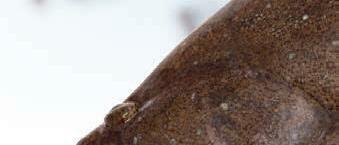
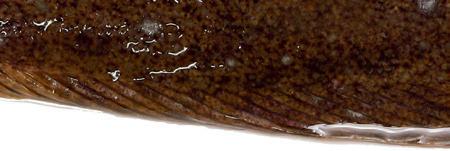







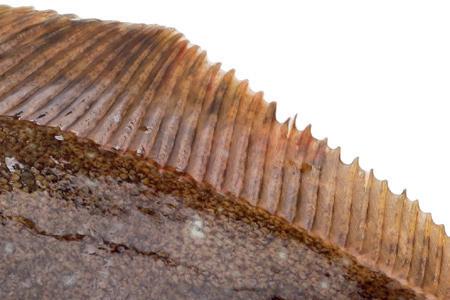
Construction for the 628,000m2 facility in Goheung, South Korea, began in 2021 and is currently 60% complete. The RAS facility will include a hatchery and nursery for seedlings/juvenile fish for production up to 80 million units/year; and grow-out raceways for 1,000 metric tonnes/year production for adult fish. Production is expected to begin in Q4 of this year.
In East Asia, demand for olive flounder has been increasing over the past two decades while supply has been declining due to production challenges from disease and climate change. Aquaculture across species in Korea is entirely traditional with wild-catch or flow-through systems, and currently there are no large-scale olive flounder producers.
Both the existing approaches are facing problems. The catch sector has seen overfishing while traditional land-based flow-through systems suffer from high mortality rates. Olive flounder is a bottomdwelling fish and the net-pen approach favoured by most salmon
Above: Olive flounderWe see this as an incredible business opportunitySouth Korea’s first RAS farm is set to start producing olive flounder this year
farmers would not be suitable this species.
Dr Lee explains: “In flow-through systems, there are no good ways to control the quality of the water supply (diseases, parasites, particles) as well as water temperature. Grow-out farmers using flow-through systems have been experiencing high mortality rates (40–70%) due to production challenges associated with this system.
“Fish is grown in untreated, polluted ocean water, then more pollutants, with faecal matter and feed particles, are pumped back out – this is unsustainable and damaging to the environment.”



In contrast, he says: “RAS (1) allows control over the growth environment; (2) allows higher densities, as we can stack raceways; (3) is operationally more efficient; and (4) shortens the grow-out phase up to 40% by keeping the optimal temperature all the time.
“Ocean water is filtered and treated to eliminate pollutants and diseases, and the fish grow in pristine conditions. BluGen will not be using antibiotics, hormones or chemicals at any stage of the production process. And mortality rates are significantly lower – with a strong breed combined with RAS, BluGen anticipates to produce at around a 1% mortality rate.”

Since 2013, BluGen has been a for-profit research and development institution working on government and private sector projects regarding genomics, breeding and other components of the aquaculture value chain.
This page from top:
The BluGen under construc�on; Flounder in tank
Opposite from top: The BluGen site; Olive flounder; Hirame is typically served as sushi in Japan
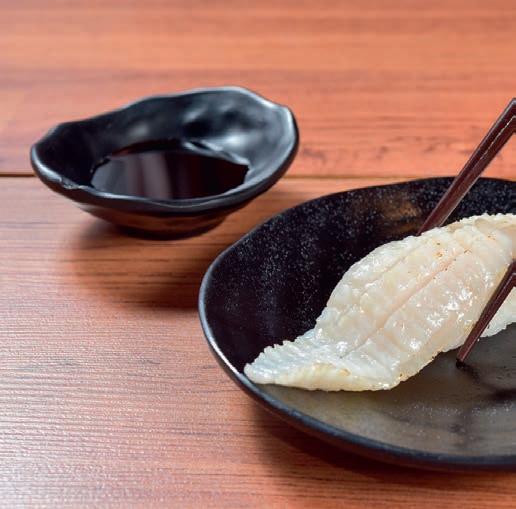
Through that process, Dr Lee says, BluGen has developed the world’s strongest olive flounder broodstock, a deep understanding of the species and market, and a thorough understanding of the value chain for this species.

BluGen’s RAS facility is designed to be “vertically stacked”. Olive flounder, as a nonpelagic flatfish, can be grown in waters as shallow as 35cm, so BluGen’s design is for six to nine shallow raceways stacked one of top of the other.

As Dr Lee explains: “This allows for highdensity operations and less geographical footprint compared with typical deep fish tanks that cannot be stacked.

“The challenges for the raceway systems are (1) each raceway should be equipped with its own water treatment, so each raceway operates independently from others; and (2) the design of the raceway must include the grading and harvest systems, since harvesting from upper raceways is not an easy task.”
BluGen is currently in discussion with a RAS technology provider, although no formal agreement has been reached.
For a number of other key aspects, BluGen aims to rely on its own expertise. For example, the company operates its own genomics facility including an up-to-date DNA chip-based genomics lab and software packages for statistical analysis.



BluGen has its own proprietary feed formula, developed over several years with the help of a grant from the Korean government. BluGen’s feed has been tested and proven, Dr Lee says, is 30% cheaper than imported feed, RAS-friendly and achieves an optimal feed conversion ratio of 1.1. Whether BluGen will license and produce its own feed or work with a supplier is still to be determined.
BluGen is also familiar with dealing with diseases and parasites. It has its own vaccine






development programme and understands growth conditions that can eliminate parasite activity.



The company also works with private and governmental institutes regarding fish health.










Dr Lee stresses: “All the components of the value chain – from feed to disease treatment – are tested, proven and ready to be deployed at a commercial scale.”
With BluGen’s genomics and breeding programme, the company says it is well positioned to hatch/nurse and supply seedlings and juvenile fish. This will be critical for the local industry, as grow-out farmers have been struggling to acquire quality seedlings. Currently, 41 million units of seedlings and juvenile fish have been subscribed by local grow-out farmers.
Prior to starting BluGen, Dr Lee had worked in the aquaculture industry in Scandinavia for two decades, leading Atlantic salmon and tilapia genomics research and breeding programmes. He founded BluGen in South Korea in 2013, with the goal of introducing world-class genomics and precision-breeding technology as well as RAS know-how to what he saw as an antiquated Korean aquaculture industry.
BluGen’s anticipated first-year production is already entirely subscribed by quality buyers. Yam Table, a reputable Korean e-commerce distributor, has subscribed to all 1,000 tonnes.
Meanwhile, over two dozen local grow-out facilities have subscribed to a combined 41 million units of BluGen’s seedling and juvenile fish.







The Korean government has shown support for the project and, in addition to earlier grants and help with joint research, BluGen received a US $3.2m (£2.6m) Korean government grant to begin construction of its RAS facility.


Additional funding of US $9m (£7.2m) has been raised to date from previous funding

rounds, including investment from Livorna Capital, a family office based in the US and South Korea. BluGen is currently in the process of raising a further round.

Will BluGen’s product repay the capital costs of a RAS facility?

Dr Lee argues: “BluGen does not have to achieve a premium price for its RAS-farmed olive flounder – in fact, all of our financial modelling and projections are based on current market rates. With grow-out costs of $3.30/kg [£2.66] and farmgate rates at $20/kg [£16.10], BluGen anticipates an operating margin of around 80%.
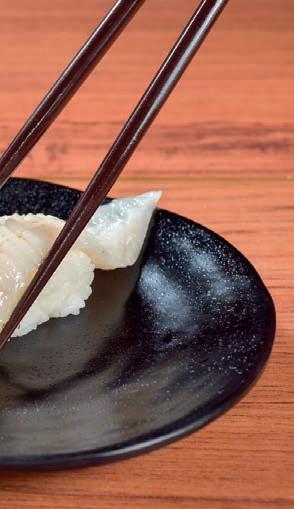
“Currently, farmgate values for olive flounder are between $20 and 24/kg [£16.10-£19.32], subject to overall size of the fish and market conditions. In comparison, salmon farmgate value is currently around $7/kg [£5.64], with similar grow-out costs to that of olive flounder.” BluGen anticipates that its fish may sell for a premium price, since the RAS-produced olive flounders will be grown without antibiotics, hormones or chemicals. In contrast, the vast majority of farmed olive flounder in Korea are treated with antibiotics and chemicals.
Dr Lee adds: “While the capex for RAS is high, with low mortality rates, growth efficiency of our selectively bred fish, our ability to sell our seedlings/juveniles to other farmers, and our understanding of the market and operating costs, we see this as an incredible business opportunity, all the while bringing a sustainable system that also benefits the local farmers and industry.
“There is growing interest within the Korean aquaculture industry to adopt new methodologies and evolve current practices. BluGen is excited to lead this movement towards more sustainable and modern aquaculture practices in South Korea.”
an

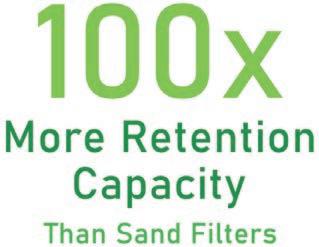



OCM Products and Flocell have been developing filtration solutions for more than 20 years. We have recently established a dedicated aquaculture business unit to bring together some main pillars of our business, namely performance, sustainability and value.


Flocell XFM filters are high performance, high capacity filtration units designed to capture large quantities of fine particles and are not subject to the typical restrictions of particulate filters. We spent two years developing a proprietary open-cell HDPE media element which is optimised for fine particle mechanical filtration. These systems are maintenance-free and capable of very high retention capacities. Users can expect to recover over 100x the load normally associated with granular filters between cleaning cycles.
Due to much higher retention capacity, cleaning is far less frequent than with other technologies, therefore increasing operational efficiencies.
Watch our Flocell XFM Fines Filter model in action at the Smolt Production in the Future Show in Norway

Flocell XFM filters are cleaned by air sparging (a technique to strip the water of organic compounds) for a short period of time before a single volume of concentrated filtrate is sent to waste having first isolated the units. They require either a pumped or gravity supply.
Complete control of UK manufacturing in-house means capital expenditure is significantly lower than similar sized filters.
Maintenance free
Simple operation and zero maintenance mean higher margins and no downtime.
They do not suffer hydraulic loss and will continue to filter at low head until they reach retention capacity and require cleaning.
Flocell XFM filters have much lower operating costs associated with power and water use. Whilst not typically used for absolute, single pass filtration, XFM filters instead work by constantly removing a percentage of the particles present. In situations where single pass filtration is the only option, multiple filters are installed in series/parallel, or alternatively a screened balancing tank or sump is present in order to continually filter a body of water.






Flocell XFM filters allow retention of biological slough associated with MBBRs (moving bed biological reactors). They help with fish tank maintenance, as part of a recirculating loop to condition water, reduce ammonia and remove load from other systems.

By integrating the filters with drumfilters, XFM units are able to effectively concentrate particulates enabling over 95% water re-use within systems
For sump water, constant low-energy cleaning reduces sludge buildup, downtime and maintenance, therefore improving profit margin.
Sand filters use large amounts of power, suffer clogging issues and require regular upkeep. XFM filters can effectively reduce the load on other systems.

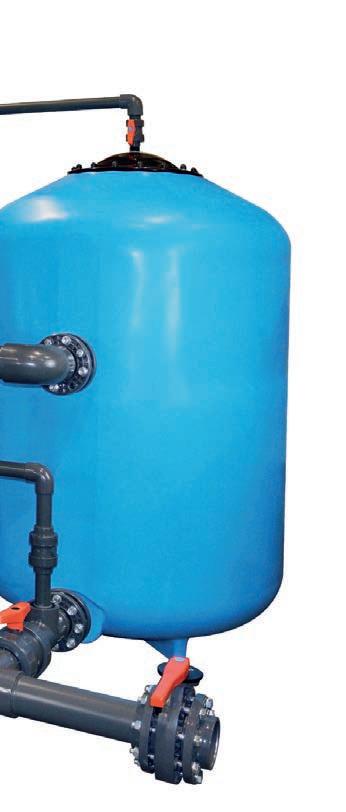
Flocell XFM filters are able to manage a large spread of suspended particle sizes from 1um (one micrometre) upwards, and there is no requirement for screen fitting or changing.

They are cost effective, with payback periods of a few months on power use alone when compared to similar sized particulate filters.
Cleaning does not need to be carried out frequently, and it can be simply automated if required.
No media replacement is needed and there is no internal maintenance under normal conditions.
XFM filters have the ability to recycle the vast majority of waste water back to the clean side of the system when used for
water recovery and removing solids from other waste streams. XFM filters use a much smaller volume of water when cleaning –no backwashing is required.
Flocell technology can be readily and very cost-effectively be retrofitted to existing inoperative large filter units or larger civil installations.

Do you have a project we can help with?
For more information please contact Gavin Haywood: Email: Gavin@evolutionaqua.com Mobile: 07718 911158 www.evolutionaqua.com/flocell
World Feeds Managing Director Peter Kersh and Sales Director Tom Noble were in attendance at the International Lumpfish Conference, organised by the Sustainable Aquaculture Innovation Centre (SAIC), to discuss everything the company is doing for lumpfish feeding and welfare. With the majority of cleaner fish sites across Scotland converted to its innovative VAF Feed Block diet, the company is now gaining a greater foothold with its unique cleaner fish products in Norway. Alongside distribution partners PTAqua, VAF Feed Blocks are now undergoing trials with Mowi and Lerøy in Norway for both lumpfish and wrasse. Pictured (from left) are Peter Kersh, Daniel Carcajona (SAIC) and Tom Noble at the International Lumpfish Conference. www.worldfeeds.uk

Salmon producers can now use FEEDNETICS TM web app and related services. With this important milestone, the aquaculture industry can use mathematical models to support nutritional and feeding decisions to improve production performance, namely:
• FEEDNETICS TM web app to evaluate multiple feeds and feeding scenarios in just a few hours before field implementation. Check out our salmon application at www.bit.ly/UserCase

• FiT feeding tablesTM, to create customised feeding tables for the farm’s target growth and feeds used


Skretting’s second aquafeed factory in Vietnam opened on 18 November in Long An Province, close to the Mekong Delta, which is regarded as the cradle of Vietnam’s seafood industry. The facility is a key element of Skretting’s strategy to develop further in Asia. The new factory is Vietnam’s most modern fish feed factory to date. With a total investment of $24m (£20m), the factory boasts two modern production lines with an annual production capacity of 100,000 tonnes. It features two separate production lines that can manufacture different products without the risk of crosscontamination. Additionally, an ultra-fine grinding system increases the nutritional uniformity of each pellet, which helps fish to absorb nutrients.
• feeding data analysis service to identify the production factors that affect performance, based on the farm’s historical production data.
Contact SPAROS at feednetics@sparos.pt to discuss how to address your feeding challenges or visit www.sparos.pt to learn more.
A range of products linked to the destruction of forests is set to be barred from the European market under new legislation from the European Union. In December, EU decision-makers concluded negotiations for an EU deforestation law.
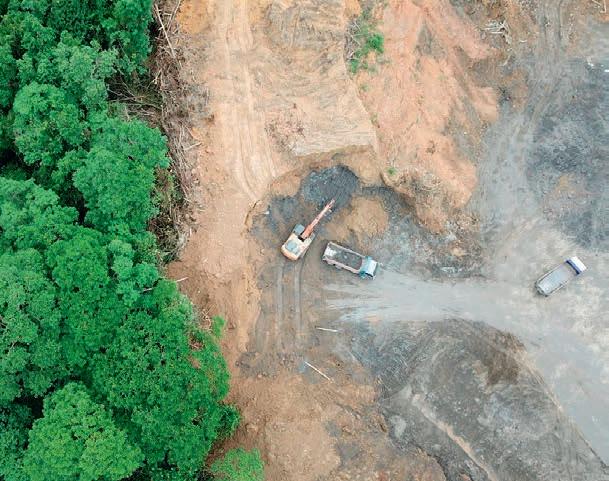
In order to enter the EU market, a range of products such as soy for aquafeed must not only be legal according to the producing country’s standards, but also demonstrably not linked to deforestation and forest degradation.
Anke Schulmeister-Oldenhove, Senior Forest Policy Officer at the European Policy Office of lobby group WWFG, hailed the new law as a win for WWF’s #Together4Forests campaign. She says: “We have made history… As a major trading bloc, the EU will not only change the rules of the game for consumption within its borders, but will also create a big incentive for other countries fuelling deforestation to change their policies.”
Calysseo, a joint venture between world-leading alternative protein company Calysta and worldwide animal nutrition producer Adisseo, announced in November that it intends to build an alternative protein facility in Al Jubail in the Kingdom of Saudi Arabia, in partnership with Food Caravan.
The partnership is aiming to build a 100,000 tonne-capacity fermenter in the Kingdom of Saudi Arabia to produce Calysta’s novel protein ingredients, which require no animal or plant ingredients. It is hoped the facility could become operational by the end of 2026.
Meanwhile, Calysseo last year successfully switched on its maiden 20,000-tonne fermenter in China, which will produce FeedKind® Aqua protein for the aquaculture market. The Saudi facility would be five times the size of the Chinese fermenter.
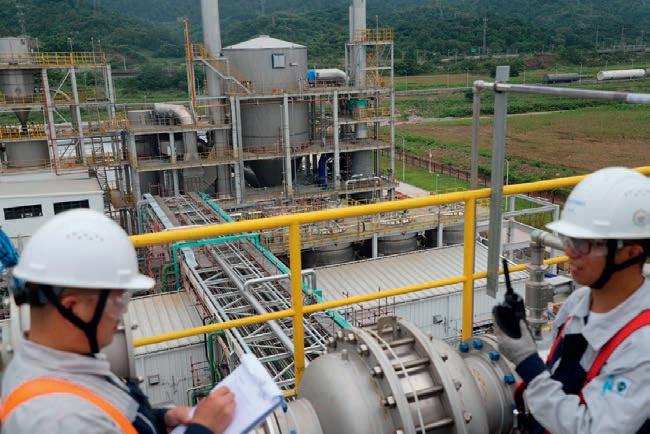
Ÿnsect, a world leader in the production of insect protein, has signed two major agreements to set up sites in the US with wheat producer Ardent Mills and in Mexico with Corporativo Kosmos.
Meanwhile, the company’s flagship facility in Amiens, France – the world’s largest vertical insect farm – has entered the commissioning phase.
The Amiens factory is 36m high with a building surface area of 40,000m2. With the arrival of the first insects on site late last year, the livestock’s growth phase has already started.
Ÿnsect produces insect protein for agricultural fertiliser and for human and animal consumption. Its powdered Ÿnmeal product (pictured), which was developed as nutrition for farmed finfish and shellfish, is based on mealworm (Tenebrio molitor) larvae.

 By Robert Outram
By Robert Outram
Over the past year, high feed prices took some of the shine off a strong market for farmed fish and shrimp for most producers.
Rabobank’s Global Animal Protein Outlook 2023, published in December, reports that global grain and oilseed prices early doubled between May 2020 and May 2022, thanks to “stronger demand, lingering supply concerns and growing geopolitical uncertainty”.

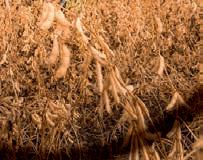



With a large proportion of aquafeed for farmed fish such as salmon now plant-based, this has led directly to higher costs for aquaculture operators.
The war in Ukraine has, of course, been a major factor, but as Rabobank points out it is not the only one affecting feed prices. Drought conditions have impacted many parts of the world, associated with a threeyear weather pattern driven by “La Niña” – a Pacific Ocean current phenomenon. This,
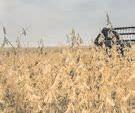
says Rabobank, has capped global production of wheat, corn and soybeans, although soy production in Brazil, and grain harvests in Russia and Australia, have been good.
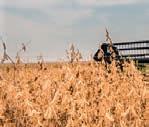
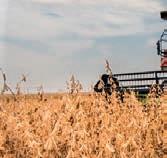
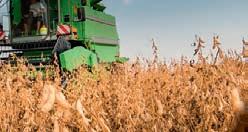
Long-range weather forecasts for 2023 suggest that we could see a more neutral pattern emerging, but Europe and North America remain at risk of drought.
As the Rabobank report points out, similar headwinds also led to an increase of 170% in feed prices between 2005 and 2008, turning margins negative for many animal protein producers.
For producers in 2023, Rabobank predicts that price pressures, especially regarding feed and energy costs, show little prospect of easing.
Alex Obach, Innovation Director with feed producer Skretting, says the key factors for his company over the past year have been: Russia and the war in Ukraine, inflation,logistics, climate change and energy.
He comments: “Skretting has discontinued the export of aquaculture feed and feed additives into Russia after having fulfilled existing obligations, which varied from contract to contract.
“The war in Ukraine has added a huge layer of volatility on already volatile markets.”
Above: Harves�ng a soybean field

Left: Soybean field Opposite: Grain prices are set to stay at a high level

In logistics, he is optimistic that transport costs are now coming down and reliability is improving, but warns that there is still high volatility and uncertainty.
In terms of the impact of climate change, flexibility is key for Skretting, he says, and it is important not to become too reliant on any one ingredient, supplier or region.
He adds: “The industry should take a step back and reflect on how it contributes to climate change, and how it can drastically and rapidly reduce its carbon and other environmental footprints, as well as social impacts.”
Reducing energy use has been a focus for Skretting for many years. Obach says: “Climate change and the associated CO2 targets that we have set have been a significant driving force for many of our energy-saving initiatives over the years. The more recent energy crisis in Europe could mean that some previously expensive technologies and solutions can now be justified.”
Sustainability has also been an important theme over the past year. In 2022, Skretting launched its Marine Ingredients Sourcing Policy, which sets out guidelines to reach its ambition of purchasing marine ingredients that are 100% certified or coming from fisheries with a fishery improvement programme (FIP) in place by 2025.
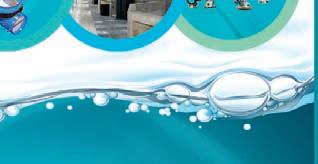



The policy outlines criteria on what to buy according to five sustainability classes of marine ingredients coming from whole fish, byproducts from wild catch and byproducts from aquaculture, aligned with the most important fishery management certifications in the industry.
In addition, Skretting has mapped countries identified as being at high risk for illegal, unreported and unregulated (IUU) fishing activities, as well as countries with a high risk of slave labour on board fishing vessels. In 2021, 80% of the marine ingredients sourced by Skretting came from fisheries certified according to the MarinTrust or MSC programmes, or from fisheries that were part of a MarinTrust FIP.
Earlier, in 2020, Skretting rolled out its Soy & Palm Ingredients Sourcing Policy. By 2025, the company aims to ensure that all its soy and oil palm materials come from deforestation-free sources.
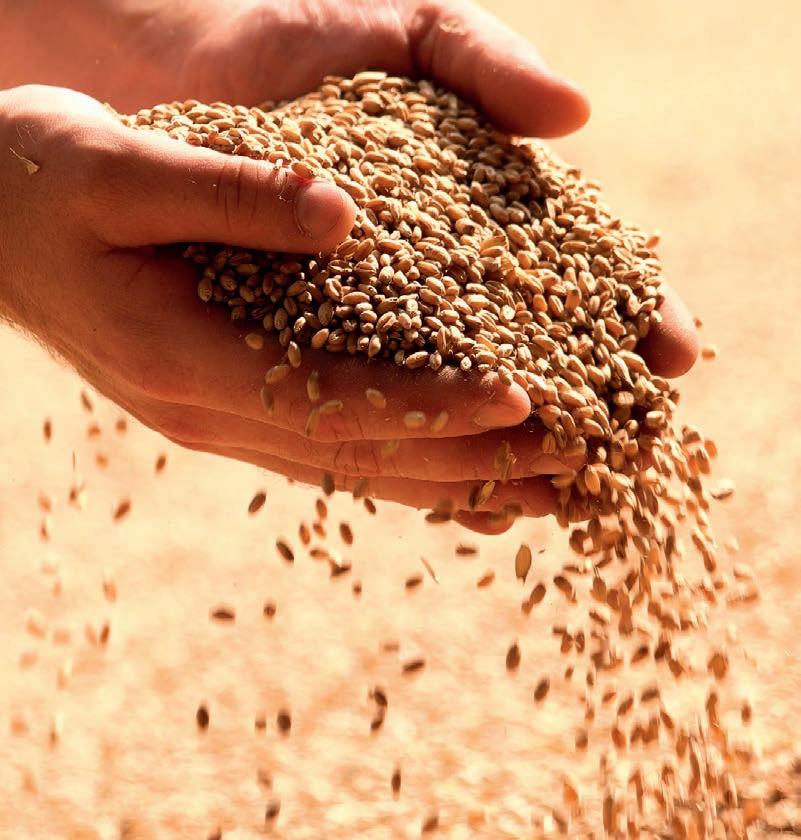
Obach says: “Aquaculture is growing and we’re optimistic about the development of the industry. However, this will not come without challenges such as high ingredient prices, which could limit the growth in certain segments. We’re aware that people have less money to spend on food and we need to see how the global patterns affect seafood consumption.
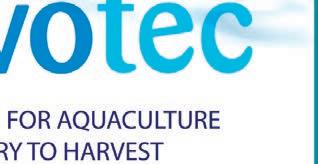
“Political decisions are also a factor to consider. The development


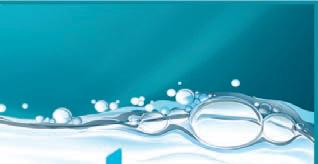
of the new resource tax that the Norwegian government will apply to the largest salmon farmers, the decision of the Ecuadorian government to stop subsidising diesel for large shrimp farms and the transition plan from open-net pen salmon aquaculture towards alternative production technologies are examples of how political decisions will affect our industry already this year.
“Closed Aquaculture systems (CAS) are becoming a reality and several big sites will start their operations in 2023. CAS is a very good opportunity to farm fish closer to the consumer.


“Biological challenges, namely infectious diseases, remain a significant threat to the growth of the industry in all geographies and probably the main reason for the increase in production costs we have observed in several species.
“Still if we consider the bigger picture, the fundamentals of our industry are still very strong. We are producing healthy, nutritious and delicious food for a growing population, and we are making significant progress on

The industry should take a step back and reflect on how it contributes to climate change
our environmental impact.”
And, as he points out, the industry is allocating significant resources to innovation to address the challenges. In Skretting’s case this means spending more than €20m (£17.7m) on innovation each year.
Peter Kersh is Managing Director of World Feeds, a specialist producer of aquafeed for a diverse range of aquarium fish species and cleaner fish for the aquaculture sector.





He says that the main factors affecting his business in 2022 have been “economy, [war in] Ukraine, inflation, cost increases and the short- and long-term impact of Brexit”.
Like other producers, company has had to increase its own prices, particularly in response to increased energy costs.

World Feeds has a strong reputation in the aquarium sector around the world, providing complete diets to a range of species, often with separate feeding stations for different species in the same shared space.
Kersh says the parallels are obvious with fish farming, where salmon and cleaner fish are kept in the same pen, but require separate feeds. World Feeds’ offering in this sector is the VAF feedblock, Kersh says, adding: “Our philosophy is to use natural ingredients and we don’t cook or bake the guts out of them!”
He adds: “I am very optimistic for our business in salmon in Norway and Scotland. We have all salmon producers in Scotland on board (except for Cooke, which doesn’t use cleaner fish) and significant progress is now being made in Norway. The aquarium pet market, on the other hand, in the UK is tough as all pet food manufacturers are seeing market tightening as people have less money to spend.”



In the long run, the aquaculture sector is also under pressure to reduce the environmental impact of aquafeed, both in terms of carbon impact and its reliance – which is decreasing – on wild-caught fish stocks. It’s not surprising, then, that farmers and feed producers are actively looking at alternative sources.
One alternative is to look further down the food chain to zooplankton such as krill. In November, in partnership with LetSea and Nofima, Aker BioMarine submitted an application to the Norwegian Directorate of Fisheries to conduct research with the goal of increasing the share of krill and other raw materials used in fish feed formulations today, and shed light on new opportunities.
Currently, Aker BioMarine is one of the few global players that has successfully introduced and scaled a new raw material, Antarctic krill, from the idea stage to producing more than 50,000 tonnes of ingredients annually including its aquafeed Qrill Aqua.

The company now aims to carry out a large-scale research trial, to be conducted in collaboration with LetSea, the experimental and research centre for aquaculture, along with research institution Nofima. Their joint project has been named the “Raw Material Revolution”. Together, the three companies plan to evaluate the performance of krill, as well as other, new raw material ingredients, when included in fish feed.
Speaking in November, Matts Johansen, CEO of Aker BioMarine, said: “If we receive approval, we plan to test seven new raw materials within seven years, with the goal of increasing the combination of new raw materials in fish feed from 0.4% to 25% by 2030.”
Meanwhile, researchers at Italy-based food and feed specialist Labomar have published an article outlining their conclusions that krill is an effective part of the diet for farmed shrimp.




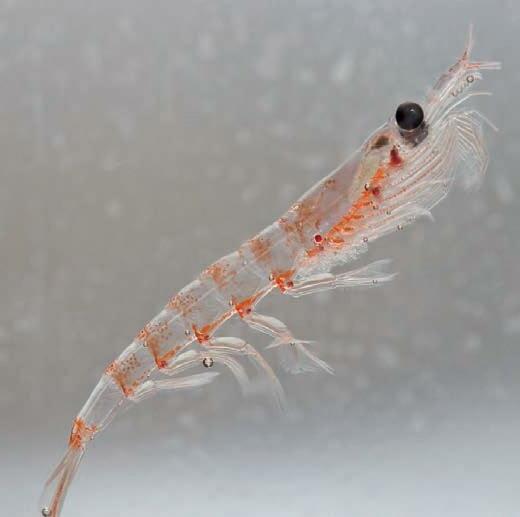
“The dietary feed represents one of the main cost elements in shrimp production, which makes optimisation of the feed formulation critical for producers. We have seen through years of study that including just 3% krill meal in the shrimp diet can reduce feed cost and improve performance and feed intake in fish-meal-challenged diets,” explains Alberto Nunes, Professor and Aquaculture Nutritionist, Labomar.
“Our theory is that the growth enhancement factors that we’ve seen in our previous studies of krill meal for shrimp is due to the balance between krill’s high feed attractiveness and stimulation with its



This page from top: Skyvest factory, Ecuador; Lumpfish; Krill
Opposite from top: Fouling on pipes under an oil rig; Helene Ziv-Douki

I am very optimistic for our business in salmon in Norway and Scotland
”
contribution of key nutrients,” adds Nunes.






The review article, titled “Developing sustainable, cost-effective and high-performance shrimp feed formulations containing low fish meal levels”, was authored by Alberto J.P. Nunes, Lise Lotte Dalen, Geronimo Leonardi and Lena Burri.














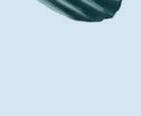



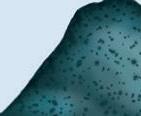





































Perhaps an even more surprising potential source of marine ingredients is being proposed by energy decommissioning company CessCon Decom – marine growth on defunct oil rigs.













CessCon has teamed up with researchers at Abertay University to explore how marine growth – a waste byproduct of the decommissioning process – can be recycled and reused.






Based on estimates from Offshore Energies UK (OEUK) the feasibility study, which is supported by the Industrial Biotechnology Innovation Centre (IBioIC), could result in up to 40,000 tonnes of marine growth found on platform “jackets” being recycled over the next decade.


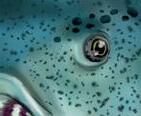

At the end of a platform’s life cycle, various types of marine species are found on the underwater jacket. Algae, seaweed, mussels, anemones, and hard and soft coral can be found at different depths, depending on environmental conditions. One of the aims of the project is to gain a better understanding of the matter that is typically found, including the composition of fatty acids and proteins, which could be turned into feed ingredients for other sectors.






The huge global demand for farmed shrimp is also leading some of the biggest feed producers to invest in shrimp nutrition, especially in production hotspots such as Vietnam and Ecuador. In October, Cargill, together with its partner Naturisa S.A., announced an agreement to partner with Skyvest EC Holding S.A. to create a new joint venture.
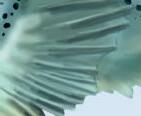
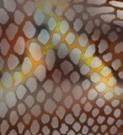



Cargill’s first venture in Ecuador came in 2015, when it partnered with shrimp-farming company Naturisa to build and operate a shrimp-feed manufacturing facility under the name Aquacargill del Ecuador.



“Since that time, the Ecuadorian shrimp farming industry has continued to grow and there is a need to meet the increased demand for high-quality feed,” says Helene Ziv-Douki, President of Cargill’s aqua nutrition business.

Through a new joint venture with Skyvest, Cargill will expand its shrimp-feed production capabilities to own and operate the shrimp-feed production facility currently owned by Skyvest subsidiary Empagran, located in Guayaquil, Ecuador. The plant has a production capacity of 156,000 metric tonnes and employs more than 200 people.
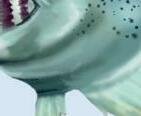

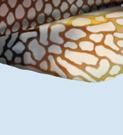
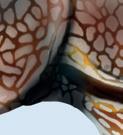




“We are excited that Cargill will bring its operational expertise and its deep knowledge of global supply chains and risk management to run this facility,” said Victor Ernesto Estrada Santistevan, owner of Skyvest.











Salmon producers can now use FEEDNETICSTM web app and related services to benchmark their aquafeeds and feeding regimes. Just as the terrestrial animal production industry has done in the past, FEEDNETICSTM enables nutrition and feed decision support by evaluating multiple feeding scenarios and quantifying their effects on production performance, environmental impacts and feed savings.


This web app enables fish farmers and technical advisors to identify the most interesting strategies, within hours, before they are implemented in the field. Check our FEEDNETICSTM application at www.bit.ly/UserCase to see how it works.
SPAROS CEO, Luis Conceição, says: “At SPAROS, we strive to bridge the gap between research in fish nutrition and the industry, and so we strongly invested in R&D to bring to life the idea of FEEDNETICS, a virtual environment based on a mechanistic model that considers the detailed nutritional feed composition, including amino acids and fatty acids, for the growth and composition of key aquaculture species, including Atlantic salmon, introduced last year.”

SPAROS also offers other modelling-related services, such as the creation of feeding tables tailored to each farm’s target growth and feeds, as “one size fits all” feeding tables are not suitable for efficient production (fitfeedingtables.com).
Feedback from our customers has been excellent. Ana Nobre, Product Manager for SPAROS Nutritional IT Tools, adds:
“Expanding our offer allowed us to meet the needs of our customers and make the most of our expertise in nutrition and modelling, enabling farm managers and field teams to identify and quantify empirically observed trends and predict conditions for success.”
Contact SPAROS at feednetics@sparos.pt to discuss how to address your feeding challenges or visit www.sparos.pt to learn more.
Mowi’s feed mill in Kyleakin on the Isle of Skye produces feed for salmon and trout at all lifecycle stages and for fresh and seawater environments.

R&D is central to everything we do at Mowi Feed and ongoing field trials inform our approach to optimising raw materials, growth rates and animal robustness.
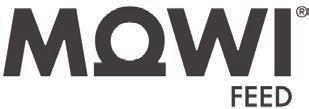
We have a robust policy on sustainability and all ingredients used in fish feed are traceable. Mowi also holds certifications for feed production according to the GlobalGAP CFM, Label Rouge and organic (Naturland and Soil Association) standards and we are already working towards gaining accreditation to the forthcoming ASC Fish Feed Standard. Mowi is regularly audited by many of the major European retailers and comply with the quality standards prescribed by a wide diversity of retail outlets.
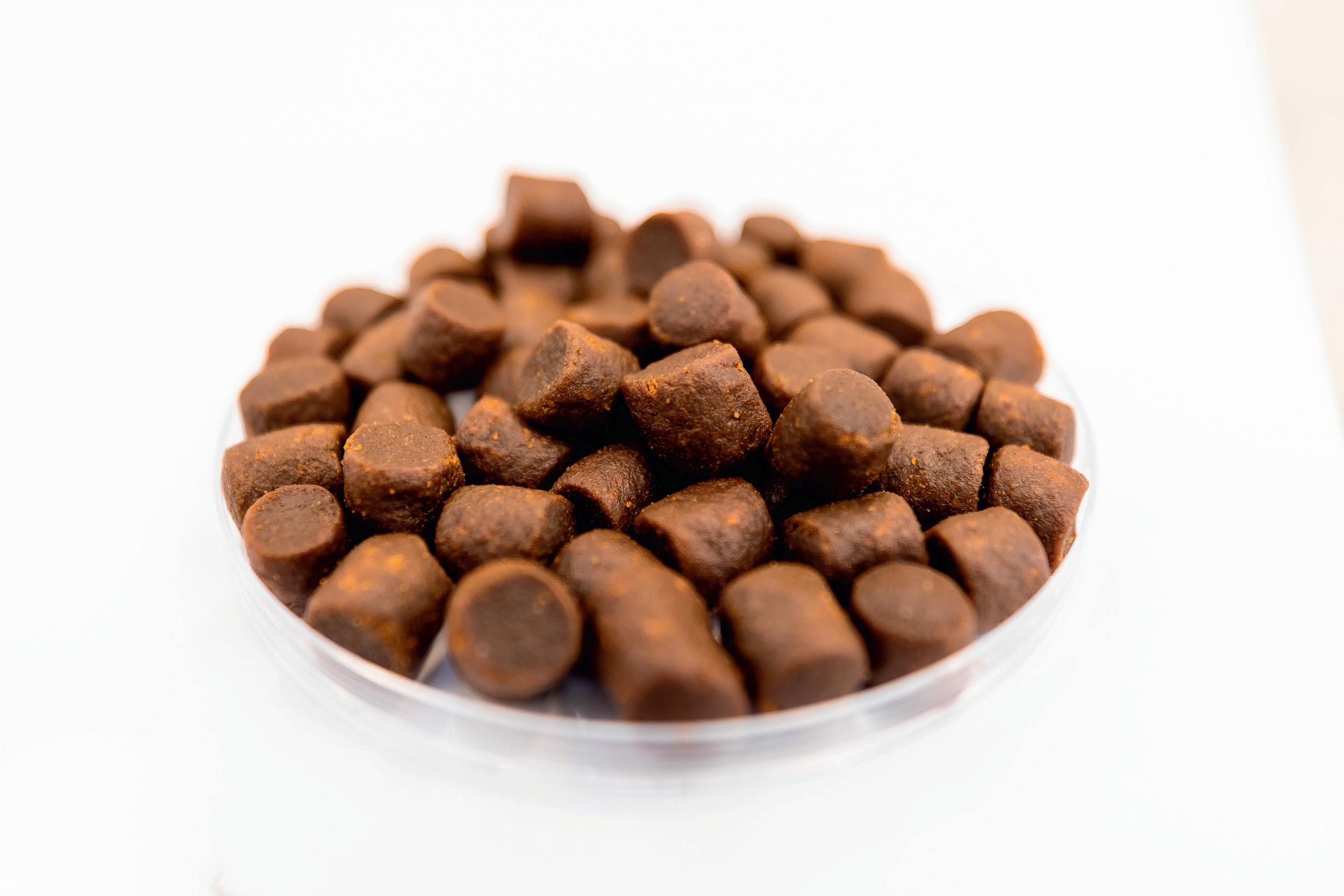
Choose Mowi Feed to rear strong, healthy fish
FEEDNETICSTM provides a fast, virtual screening of feeding questions

INTERNATIONAL shipbuilding business VARD Group is selling its subsidiary, Vard Aqua, to the Norwegian engineering company Imenco. Vard Aqua (formerly Storvik Aqua) develops products and supplies equipment to customers in land- and sea-based aquaculture. The company was established in 1985. Managed from Sunndalsøra, it has a total of 34 employees in Norway, Chile and Scotland. Chairperson of Vard Aqua, Amrit Bhullar (pictured), said: “ We feel confident that Vard Aqua will have a rewarding future in Imenco. Vard Aqua fits in well with Imenco both as a company and through their product portfolio, strategies and goals.”
Intership takes delivery of new wellboat
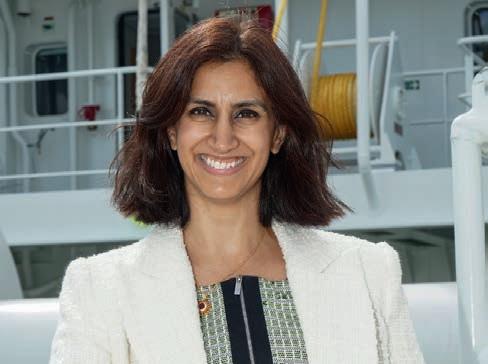
NORWEGIAN wellboat company Intership has taken delivery of the first of two newbuilds from Zamakona Yards, Bilbao. The vessel Inter Atlantic is designed by NSK Ship Design and has a load capacity of 2,200m3. The fish handling system is delivered by MMC First Process. The vessel is equipped with a high capacity freshwater production system, capable of producing 5,000m3 of freshwater per day for Intership’s freshwater treatment for lice and AGD (amoebic gill disease), which uses a reverse osmosis system. “Inter Atlantic” will commence its operations with a salmon farming company in Scotland, before moving to Canada.
DYNEEMA® has developed the first ever bio-based HMPE fibre which is sourced from renewable mass-balanced feedstock. This innovation helps to reduce the reliance on fossil fuel while maintaining the same performance, strength and longevity as conventional Dyneema® fibre. Aquaculture nets made with bio-based Dyneema® fibre have a carbon footprint up to seven times lower than polyamide nets and up to 15 times lower than nets made with generic HMPE fibre. The benefit is a reduction of CO2 emissions of up to 16 tons and 36 tons respectively per average size containment net. Interested?
Please contact the Aquaculture team at Dyneema® to discover more. david.castellanos@avient.com or bart.tacken@avient.com www.dyneema.com
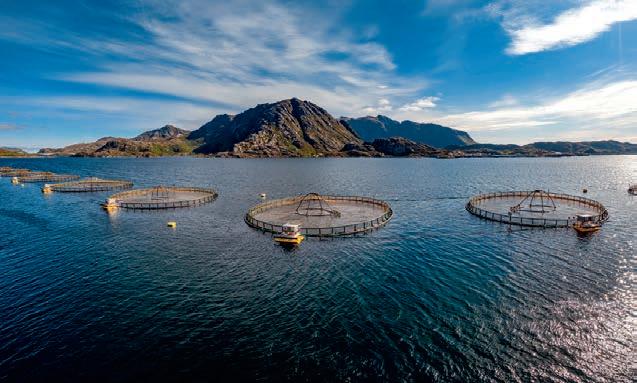
of
BENCHMARK Genetics and the University of Chile (Faculty of Veterinary and Animal Sciences) have formed a strategic partnership focussed on developing genetic and biotechnology solutions to tackle sustainability challenges in the aquaculture industry. This will include improving selection for resistance to key disease threats, improving the definition of resistance phenotypes, and harnessing the genomic and gene editing technologies. Pictured (from the left) are: Ross Houston, Director of Innovation, Benchmark Genetics; Morten R ye, Genetics Director, Benchmark Genetics; Jean Paul L’horente, Technical and Breeding Manager, Benchmark Genetics Chile; and José Yanez, Director of Research and Development, Faculty of Veterinary and Animal Science at the University of Chile.

SEAGRICULTURE ASIAPACIFIC 2023 seagriculture-asiapacific.com
1st International Seaweed Conference AsiaPacific. Online February 8-9, 2023
2023
www.was.org
New Orleans, Louisiana, USA February 23-26, 2023

en.aquafuturespain.com Santiago de Compostela, Recinto FIG-Silleda, Spain March 28-30, 2023
www.seawork.com
Seawork is a “one stop shop” providing access to the commercial marine and workboat business. Southampton, United Kingdom June 13-15, 2023

SEAGRICULTURE USA 2023 seagriculture-usa.com
2nd International Seaweed Conference USA. Portland, Maine, USA (TBC) September 2023 (TBC)
AFRAQ 2023
www.was.org/meeting/code/AFRAQ23 Lusaka, Zambia November 13-16, 2023
FEBRUARY 24
www.was.org
San Antonio, Texas, USA February 18-21, 2024
seagriculture.eu
LACQUA23
www.was.org Panama City, Panama April 18-21, 2023
www.oceanbusiness.com
The hands-on Ocean Technology Exhibition and Training Forum.
Southampton, United Kingdom April 18-20, 2023
WORLD
2023
www.was.org Darwin, Northern Territories, Australia May 29-June 1, 2023
12th International Seaweed Conference EU organised since 2012. Trondheim, Norway June 21-22, 2023
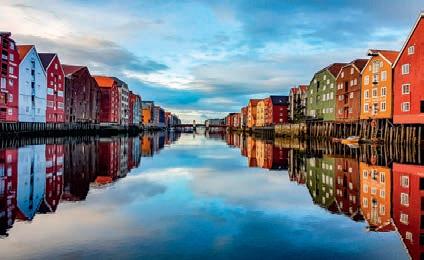
www.aquanor.no/en/ Trondheim, Norway August 22-25, 2023
2023
www.aquaeas.org
The European Aquaculture Society’s annual conference focuses on “Innovative Solutions in a Changing World”. Vienna, Austria September 18-21, 2023
www.aquacultureuk.com
Aviemore will once again be the venue for this biennial trade fair and conference. It is undoubtedly the most important aquaculture exhibition held in the British Isles. The show has a tremendous following and with increased investment for 2024 it promises to reach even further across the broader aquaculture markets in both the UK and Europe.
Aviemore, United Kingdom May 14-15, 2024

JUNE
www.aquaeas.org - www.was.org Stavanger, Norway June 24-28, 2024
WORLD
2024 Oman November 2024
AQUACULTURE UK 2024 www.fishfarmermagazine.com












































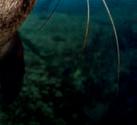







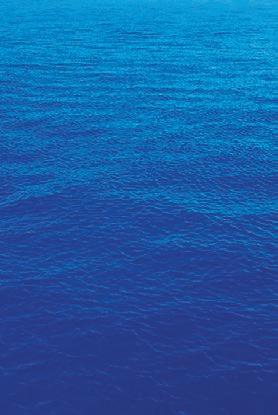











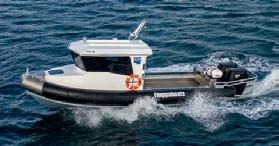


















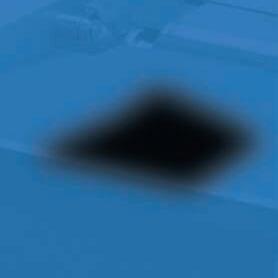












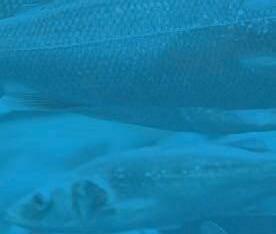
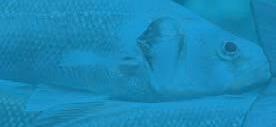
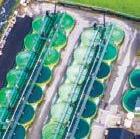

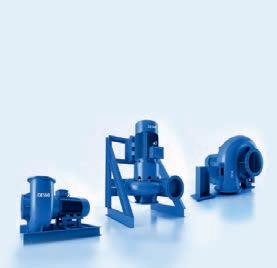



Ican’t say that 2022 will go down as my favourite year, except inasmuch as it is the year when people realised just what the Covid lockdown has done to us. Now I dare to say the things that I was saying much more privately.
To all of those people who frowned at, reported or criticised others for not wearing masks or not scrubbing their hands until they bled, it is now clear how functionless and useless the lockdown was. Not only has it severely damaged the fabric of all of our communities, but it has left a bill the like of which we have not seen since the Second World War.
The politicians are already pushing taxes beyond the record high we were at before and that is just the beginning. It is not my generation that will pay, and pay heavily, but the next three.
As to my beloved industry, many things come to mind. It is notable that the wild salmonid lobby group Salmon & Trout Conservation has changed its name again to WildFish. I wonder if they removed “conservation” because even those humourless individuals could see the wonderful irony of a name so blatantly the opposite of everything they were trying to do.
The wild fish lobby has always given me great cause to laugh, not least when they put the Atlantic salmon on the biodiversity action list whilst at the same time complaining about declining catches. There have been so many idiotic ideas from that group that I am really surprised they still have political traction at all.

However, 2022 is also the year when we learned that ideas don’t have to make sense, or be supported by the majority of people, to dominate the media. It is notable, though, that the wild lobby have failed to do this.
I particularly liked Hamish MacDonnell’s article last month with its focus on the lack of real support for these activists.
Another well-known anti-fish-farming activist decided that he would protest with his supporters outside the RSPCA headquarters about seals and our industry. The said “anti” decided to dress up as a seal. On top of this idiocy, he decided to let the press know and any other people he thought important that he was doing this and that there would be a big crowd.
Unluckily or not, depending on your point of view, the day chosen saw rain coming down like stair rods. Seals, as we all know, have waterproof coats, but seal costumes do not! A very good friend showed me a picture of what looked like a drowned rat with one other person standing by the sign at the edge of the entrance to the RSPCA. I couldn’t even make out what it was designed to be. The photograph never got into the press.
Whilst the hype around these supposed demonstrations of support, from writing to top chefs and restaurants to trying to stop people buying salmon in supermarkets, has been energetic, the end product has always been at best feeble.
The only area where these people have traction is with the politicians, the departments, the councils and all areas of development. It is time this ended and that we started to encourage growth and risk-taking again.
So what does 2023 look like? I tried to do this last year and hoped that the Russians wouldn’t invade Ukraine. I hope, this year, that we will see the fall of Putin and the end of the war. I
think both are likely, but not soon. I think food prices will stay high. I’m afraid that both Scotland and the rest of the UK are going to see some very tough financial times. Businesses will be under pressure for some time to come, although I still believe that the food sector will be a good place to be. Mostly, I fear that there will be a significant level of disruption and civil disobedience.
I hope you had a wonderful Christmas and New Year, but I would ask you to remember some of those who have not. My thoughts will be with a very dear Russian friend of mine, who had to leave his home country as he could not condone the war and is still in deep despair about it. He had to sell all of his possessions in Russia in order to get out. He has spent a lot of the year in Armenia, but now has managed to get to Greece, where he hopes to reside.
My last thoughts for 2022 lie with those displaced by this bloody war and that bloody tyrant. They are innocent victims and whilst we may pay a lot more for our food and necessities, they have lost everything.
The wild fish lobby has always given me great cause to laugh








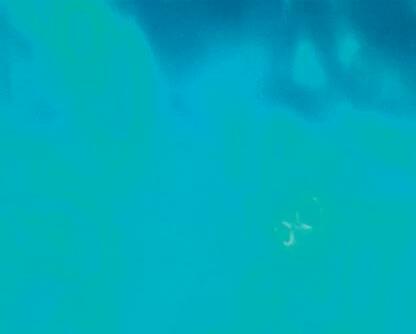














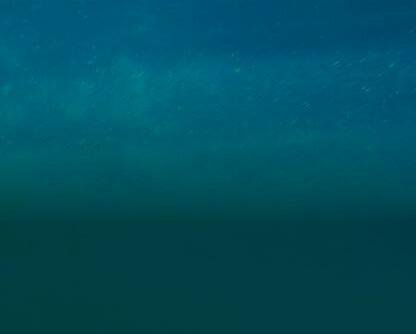

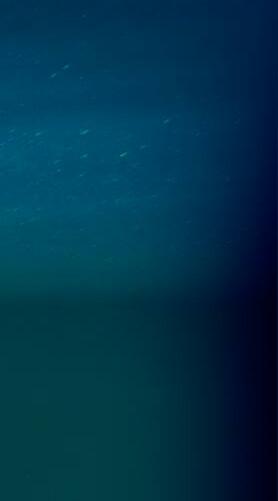




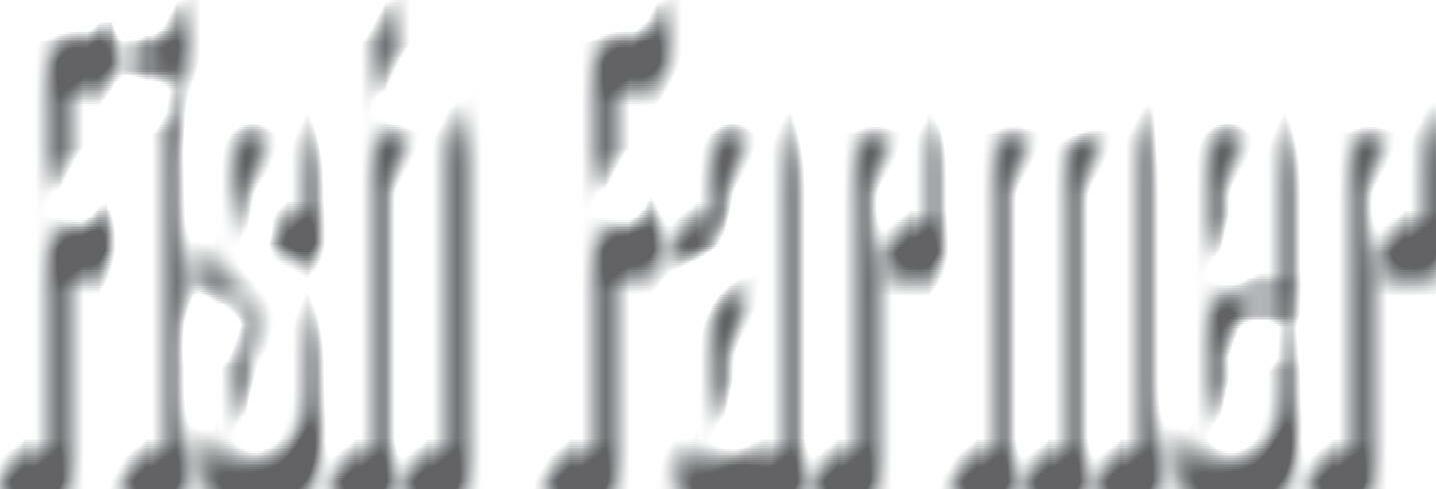


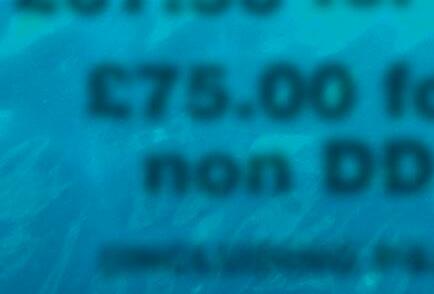
















Clynav™ will turn the way you see PD control upside down. Clynav is like no other PD vaccine - it uses Elanco’s unique DNA plasmid technology and has become the leading choice for PD protection in Norway. Clynav is delivered intra-muscularly without the need for an adjuvant.



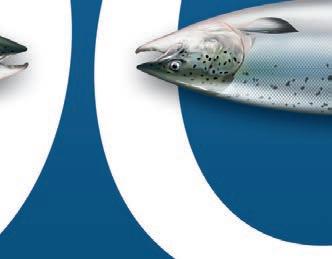


So, with Clynav, you can rest assured of excellent PD protection without the risks associated with conventional vaccines.












Take back control of PD with Clynav. It will change your point of view, for good.



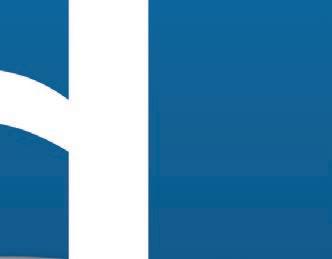


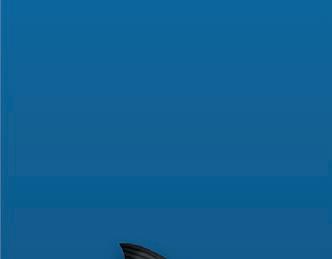

Clynav brings fresh hope in the fight against pancreatic disease